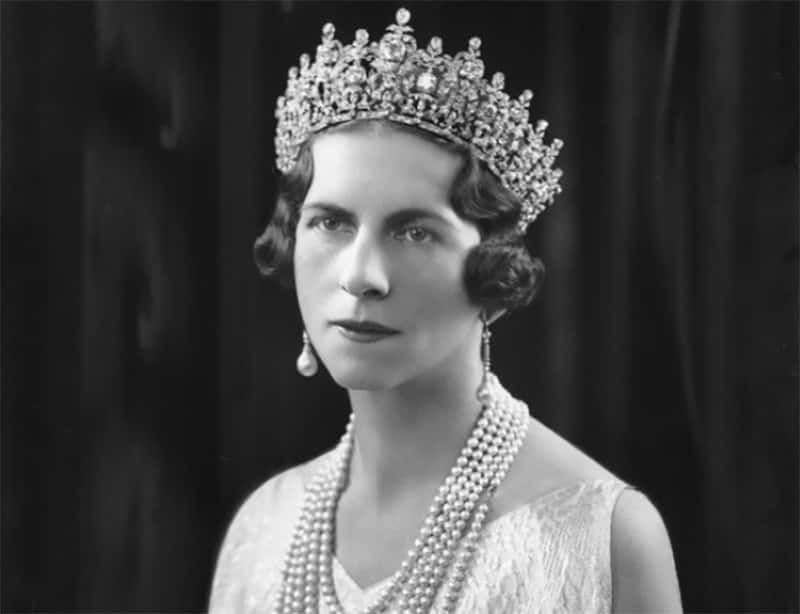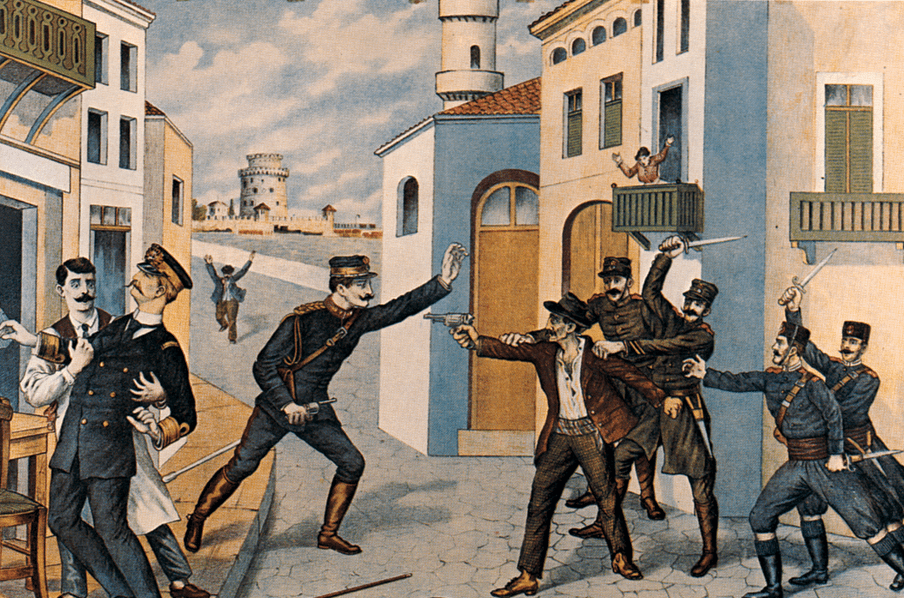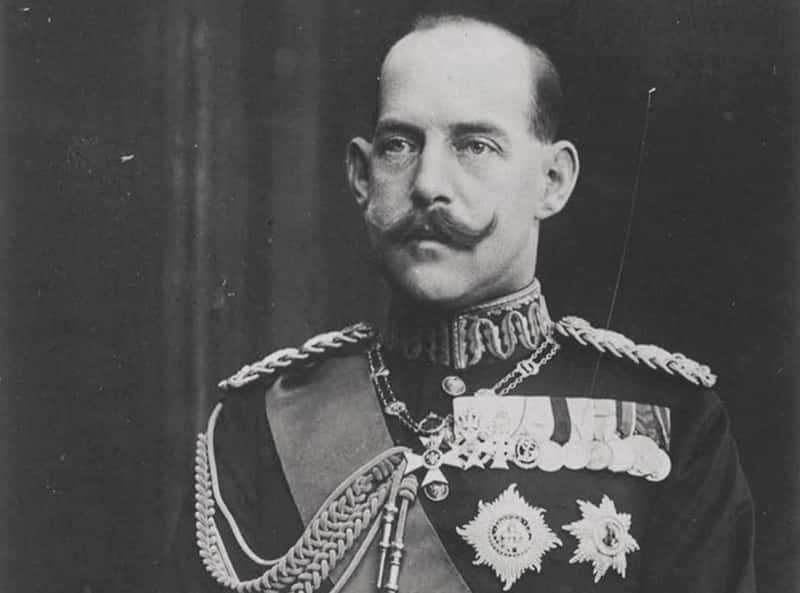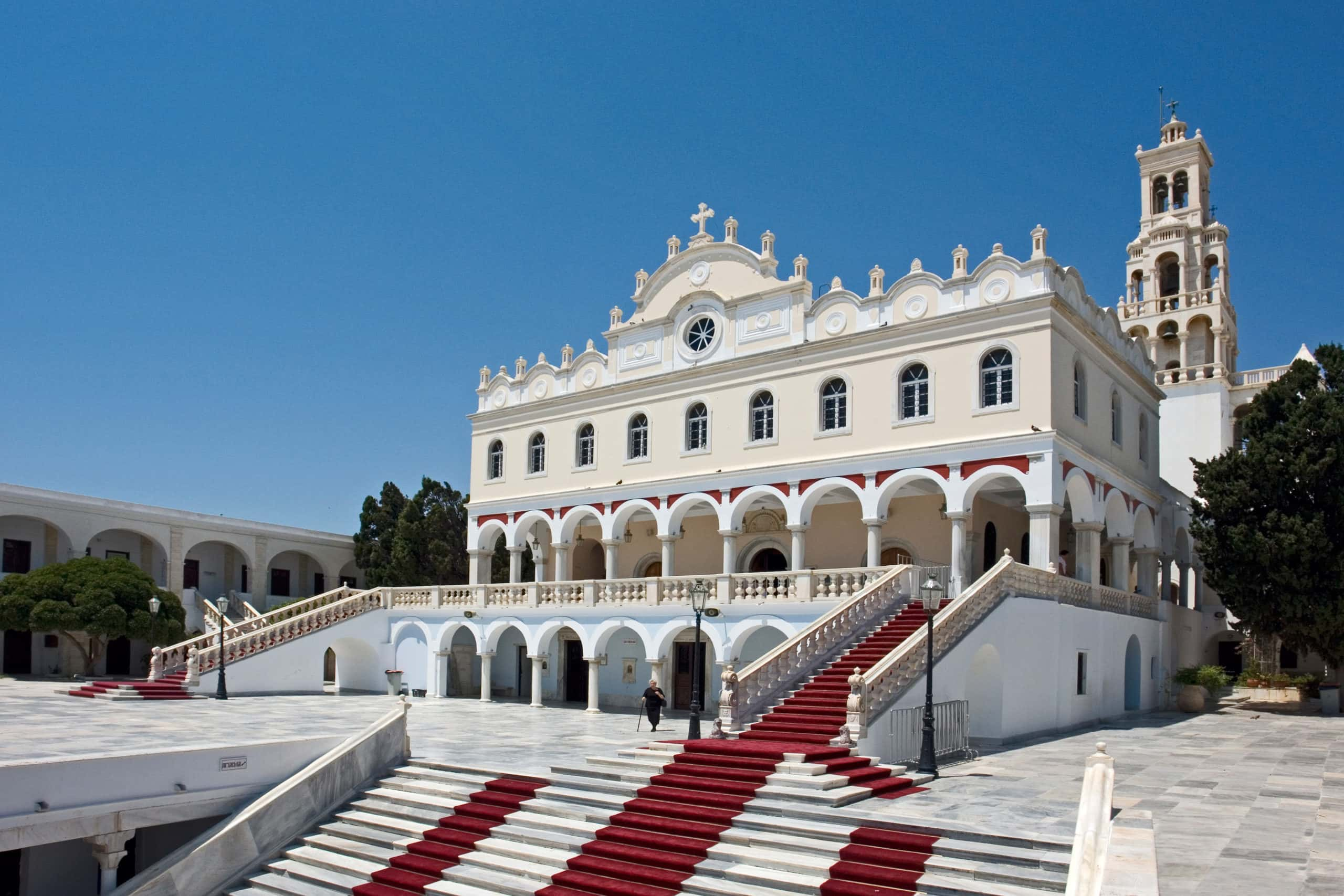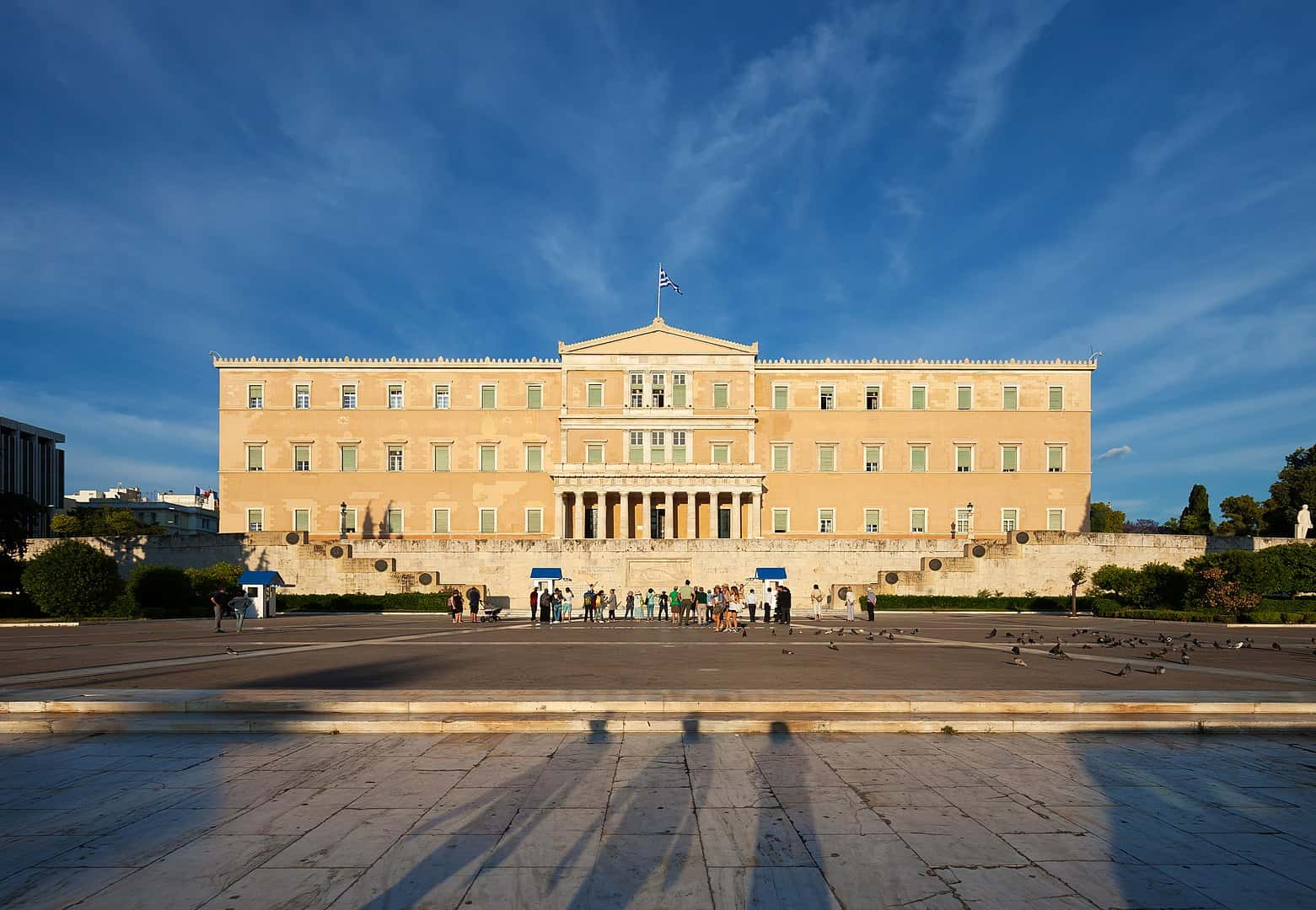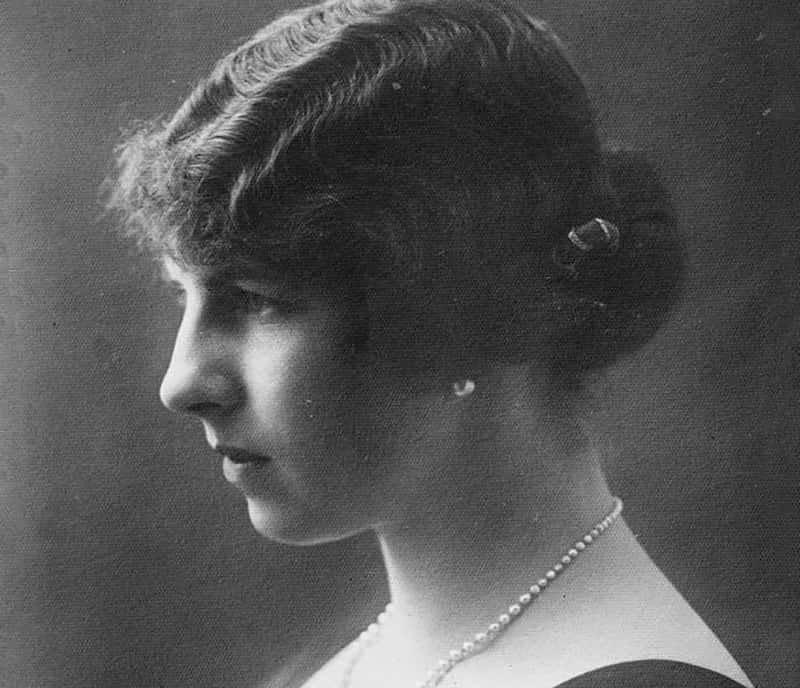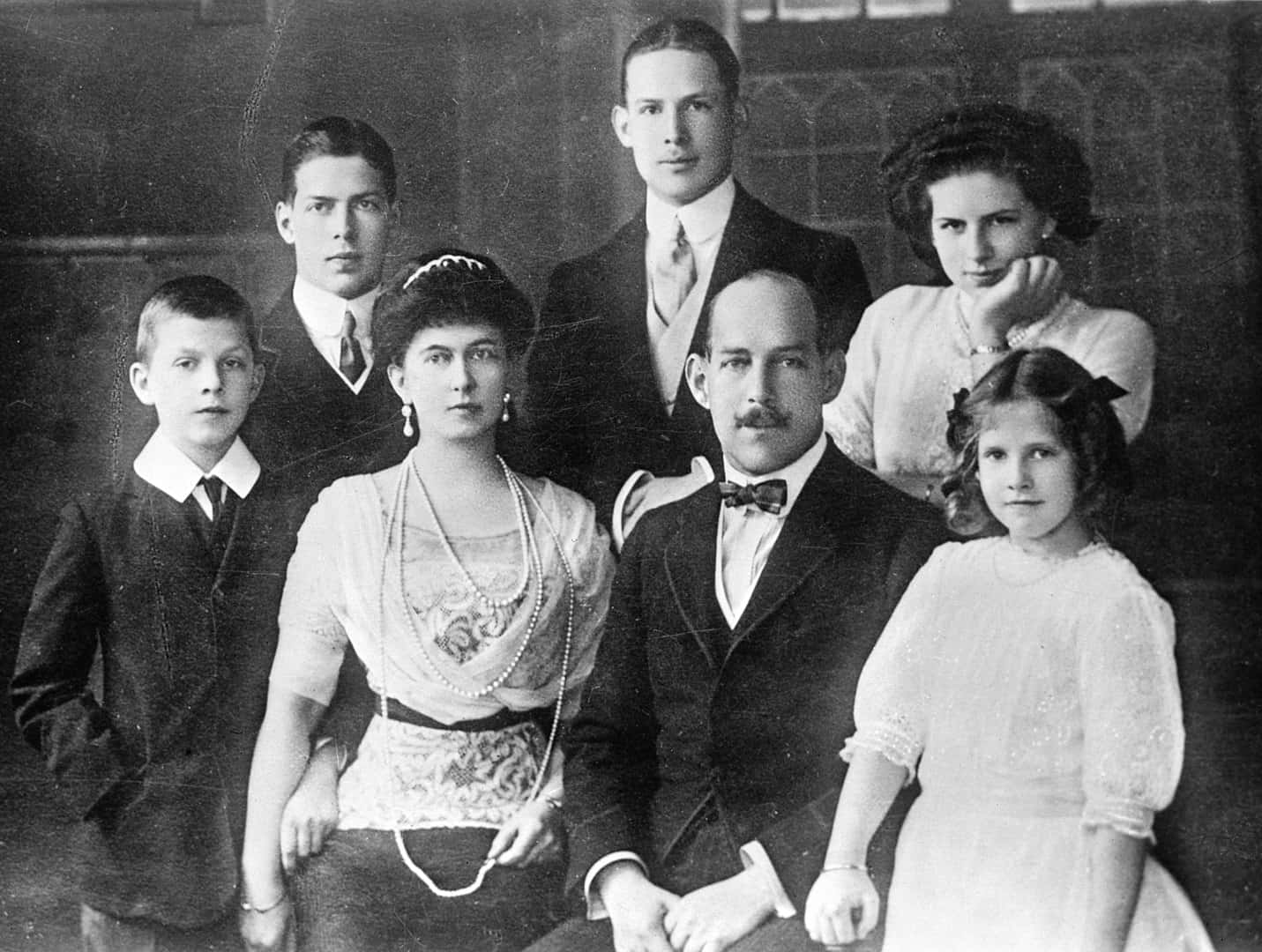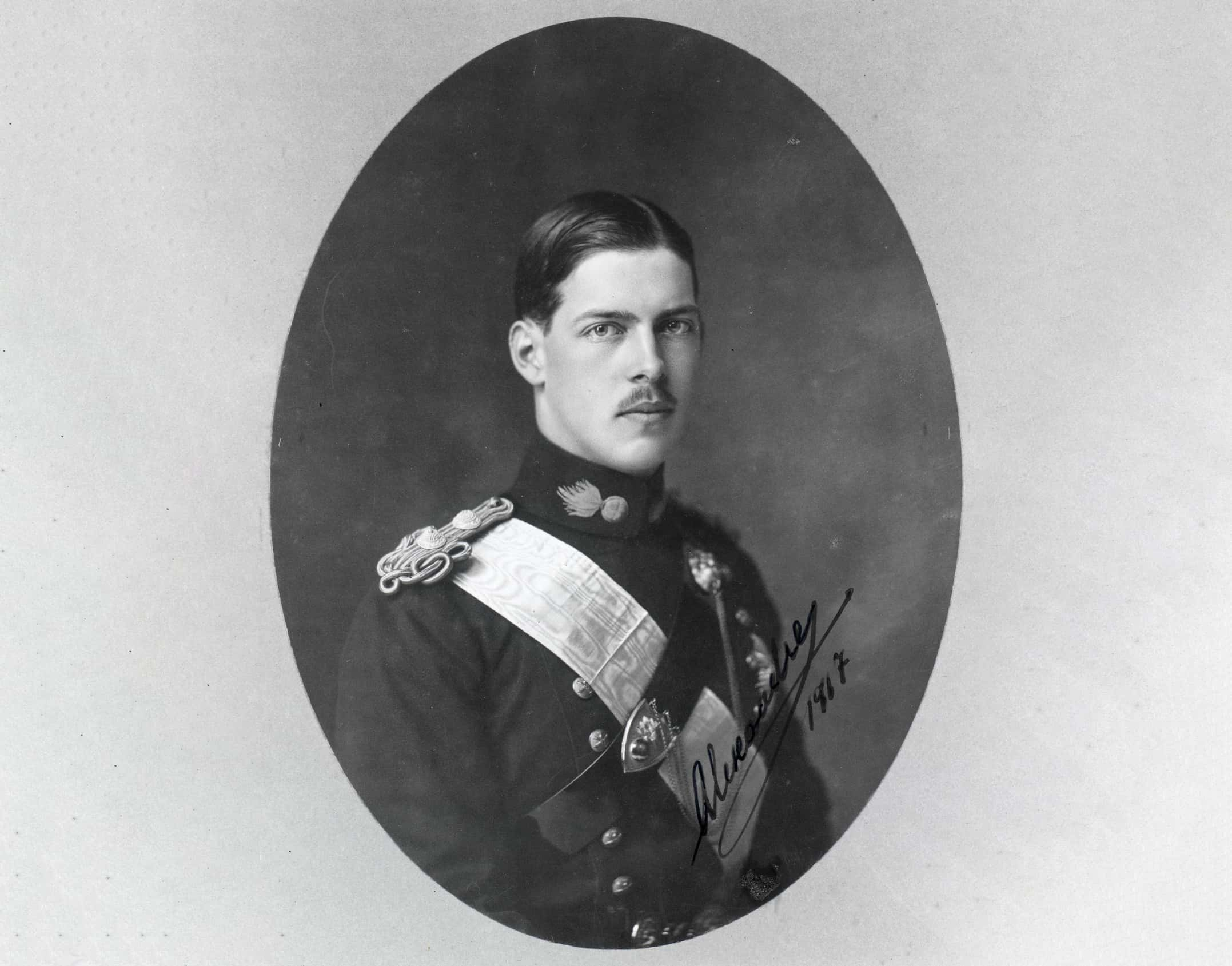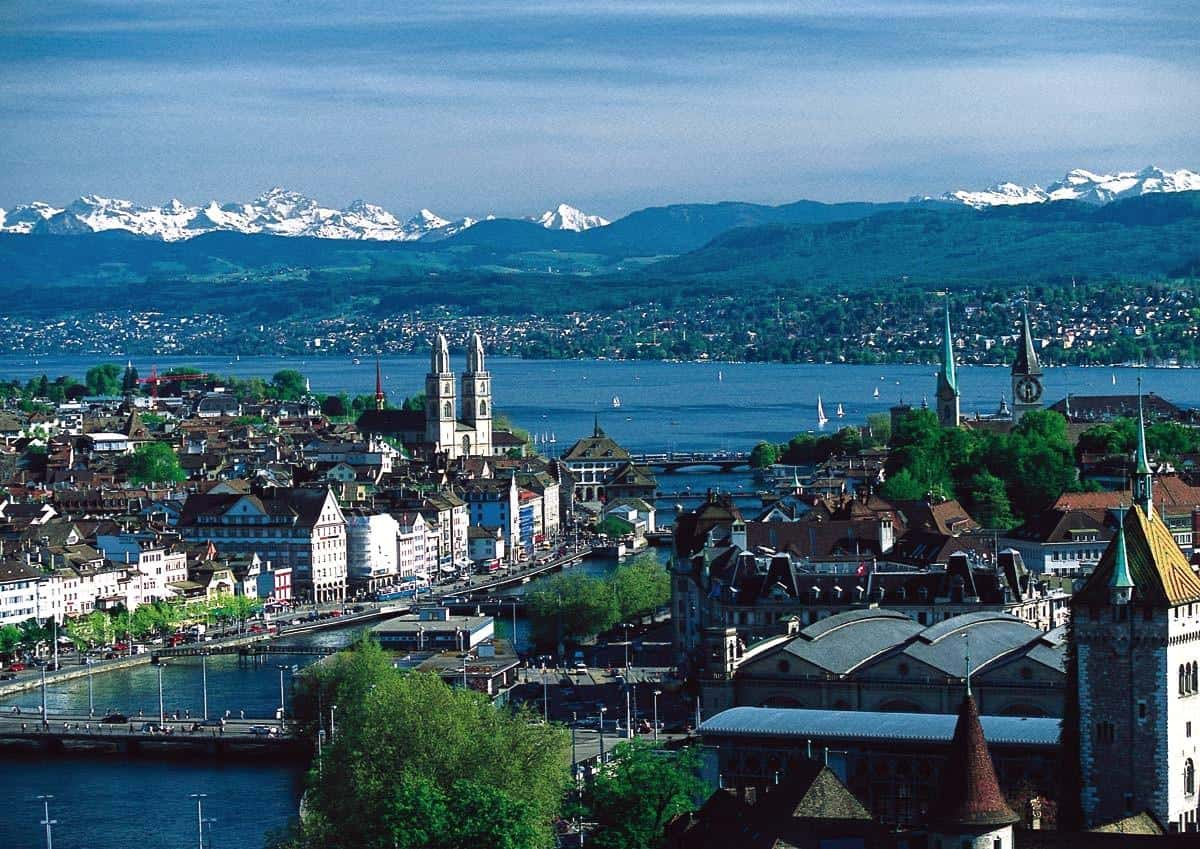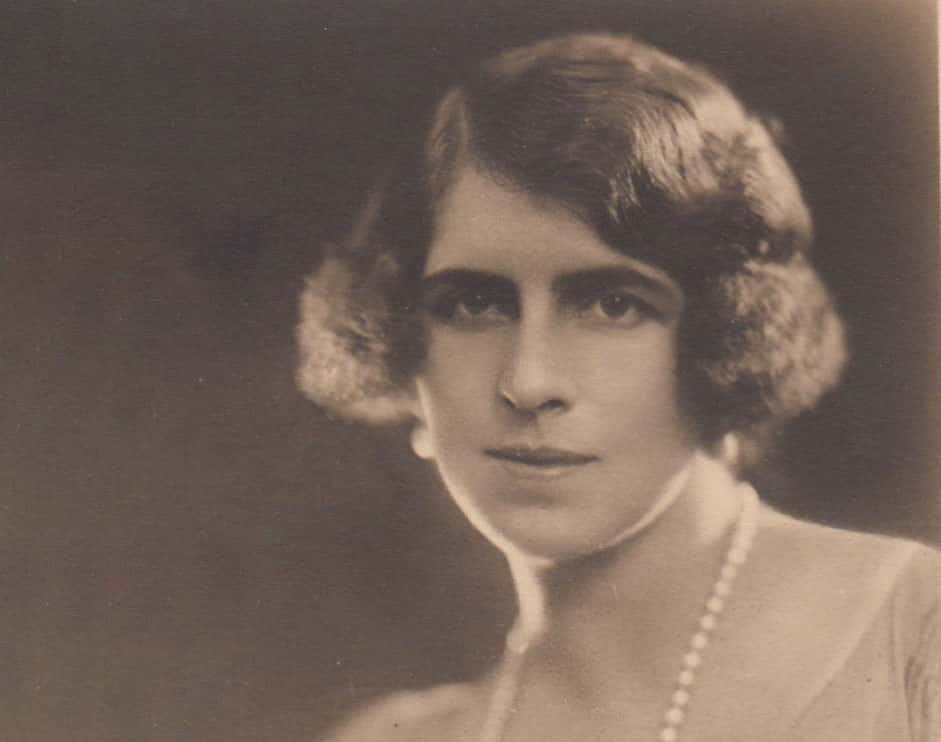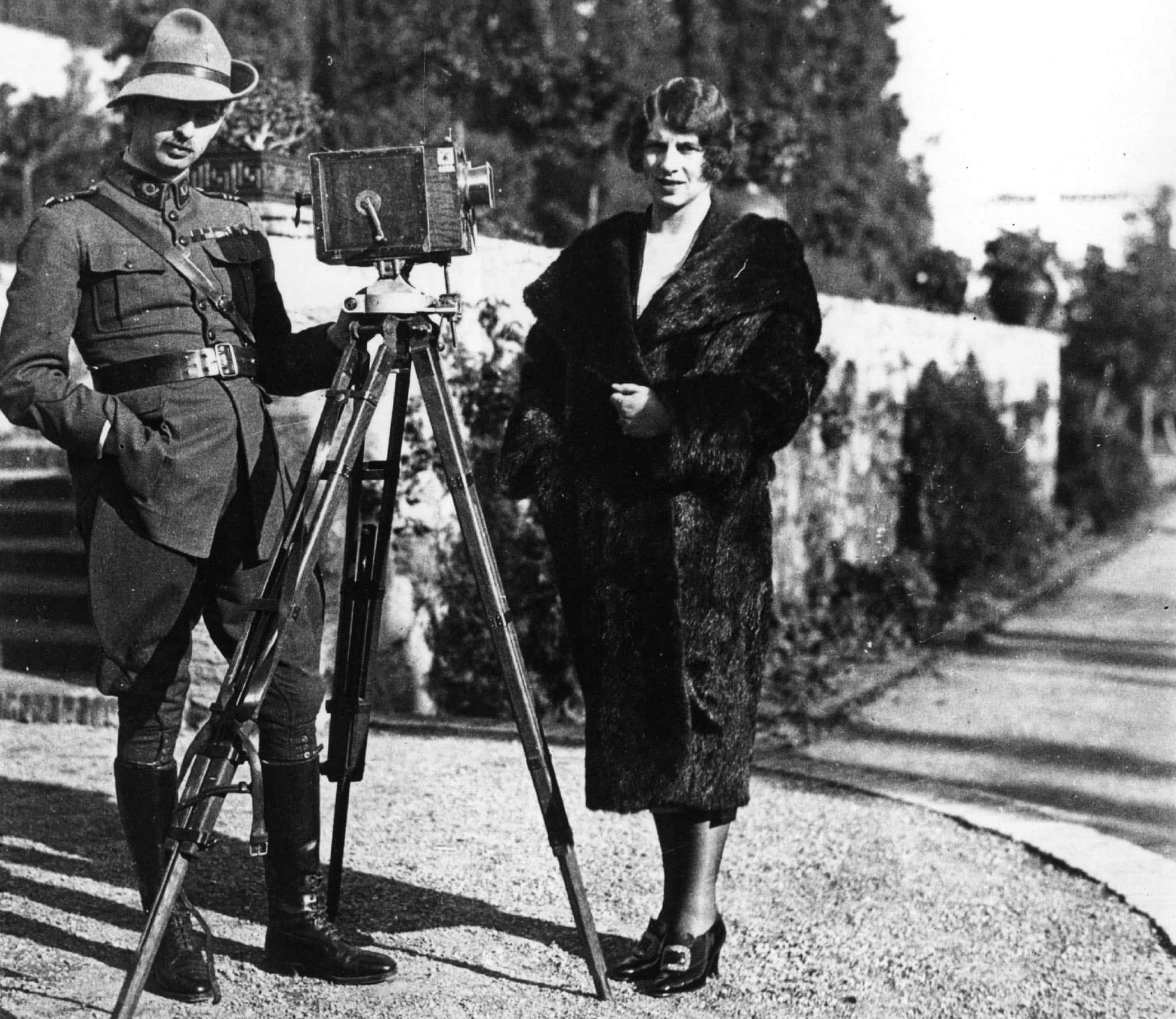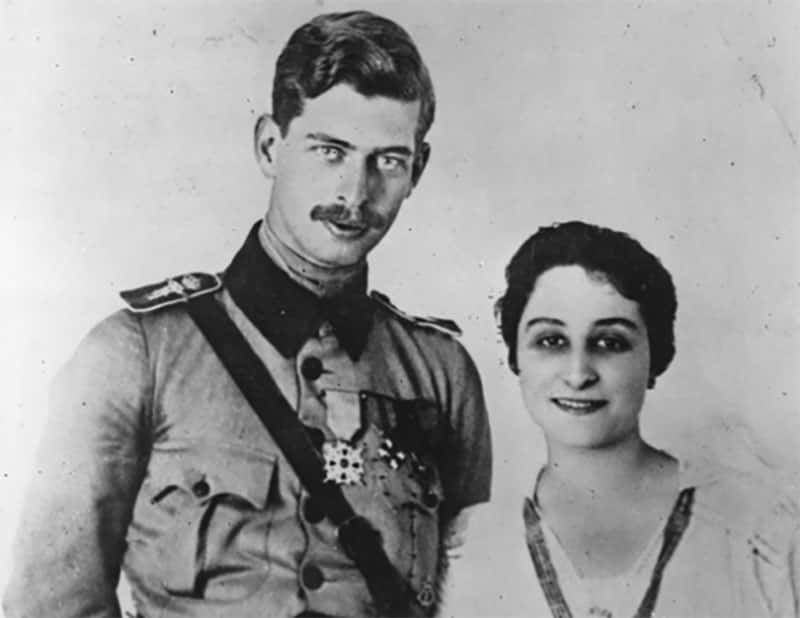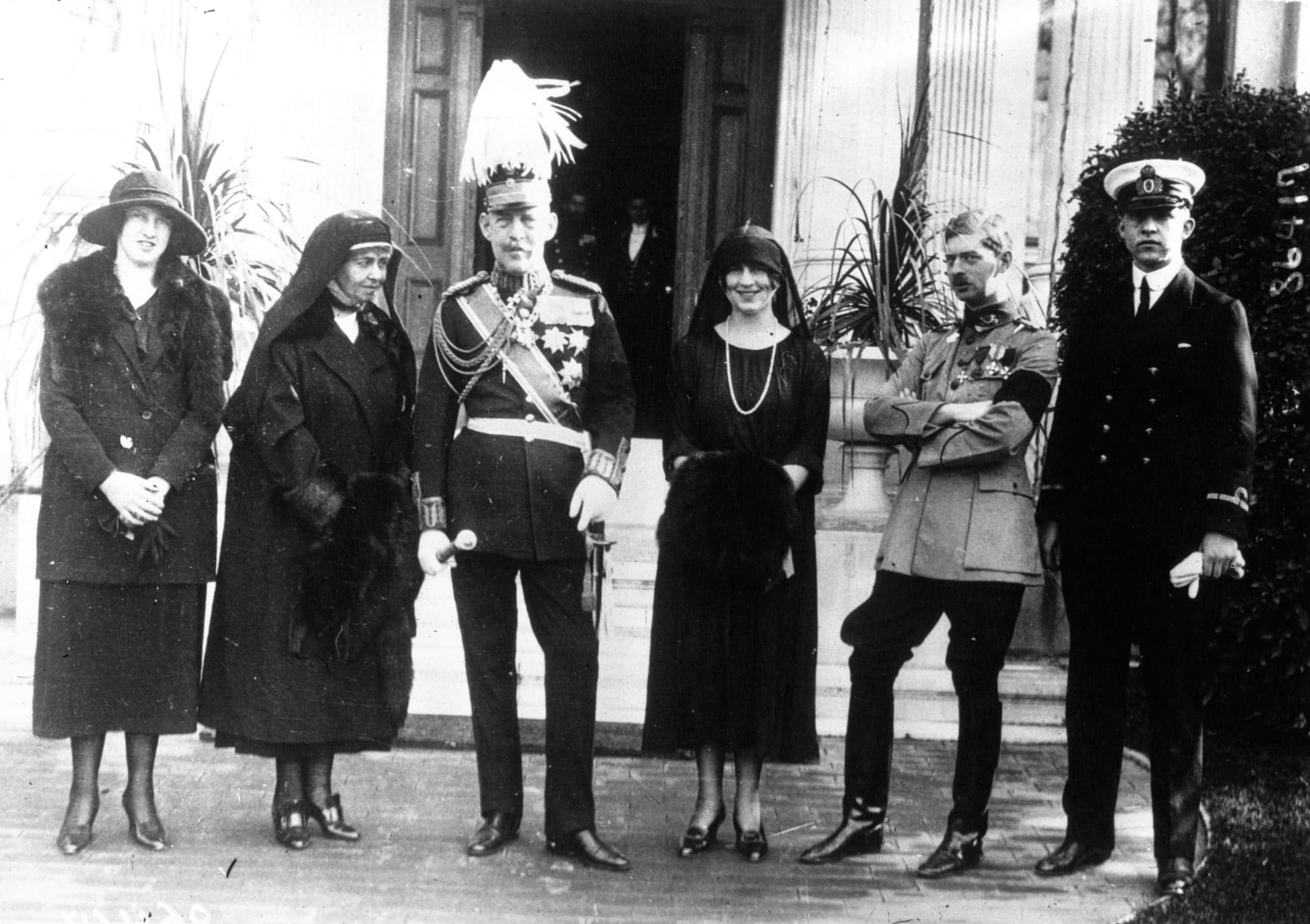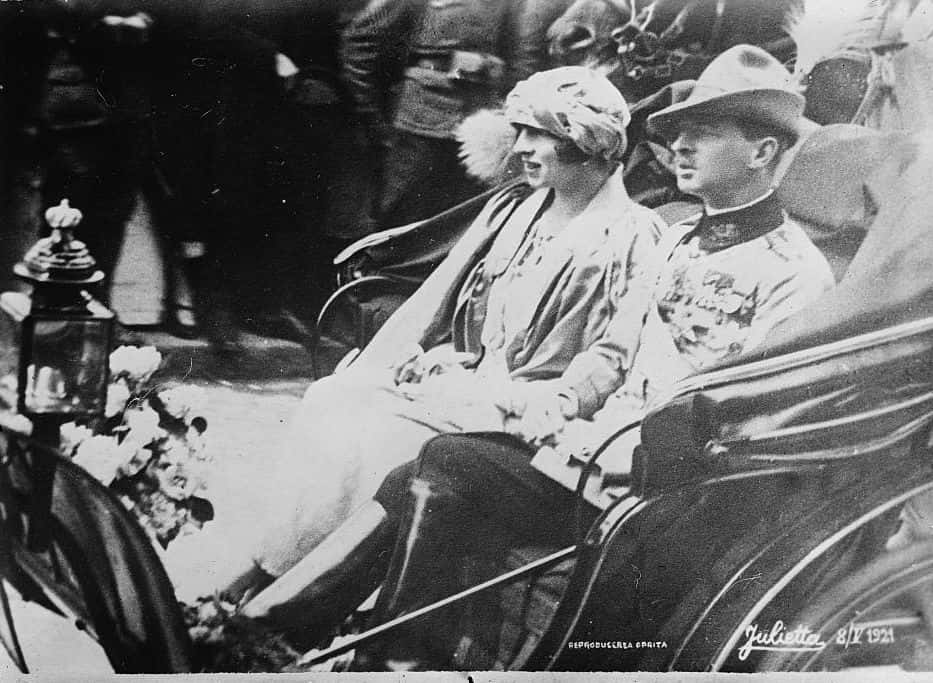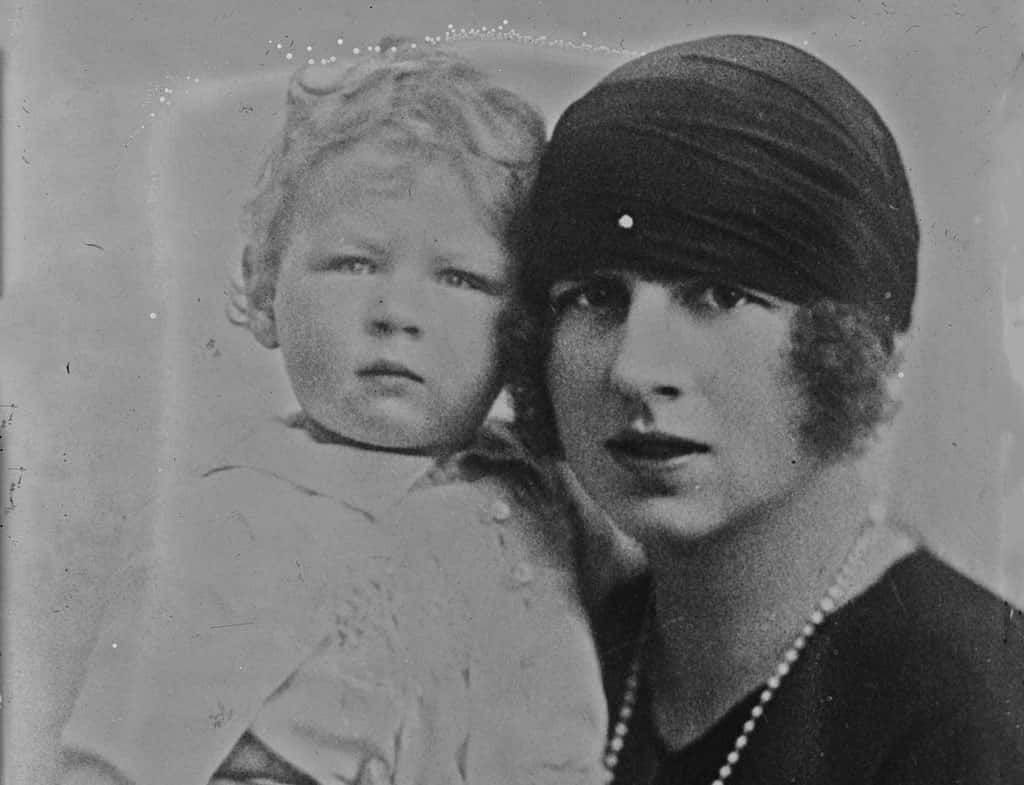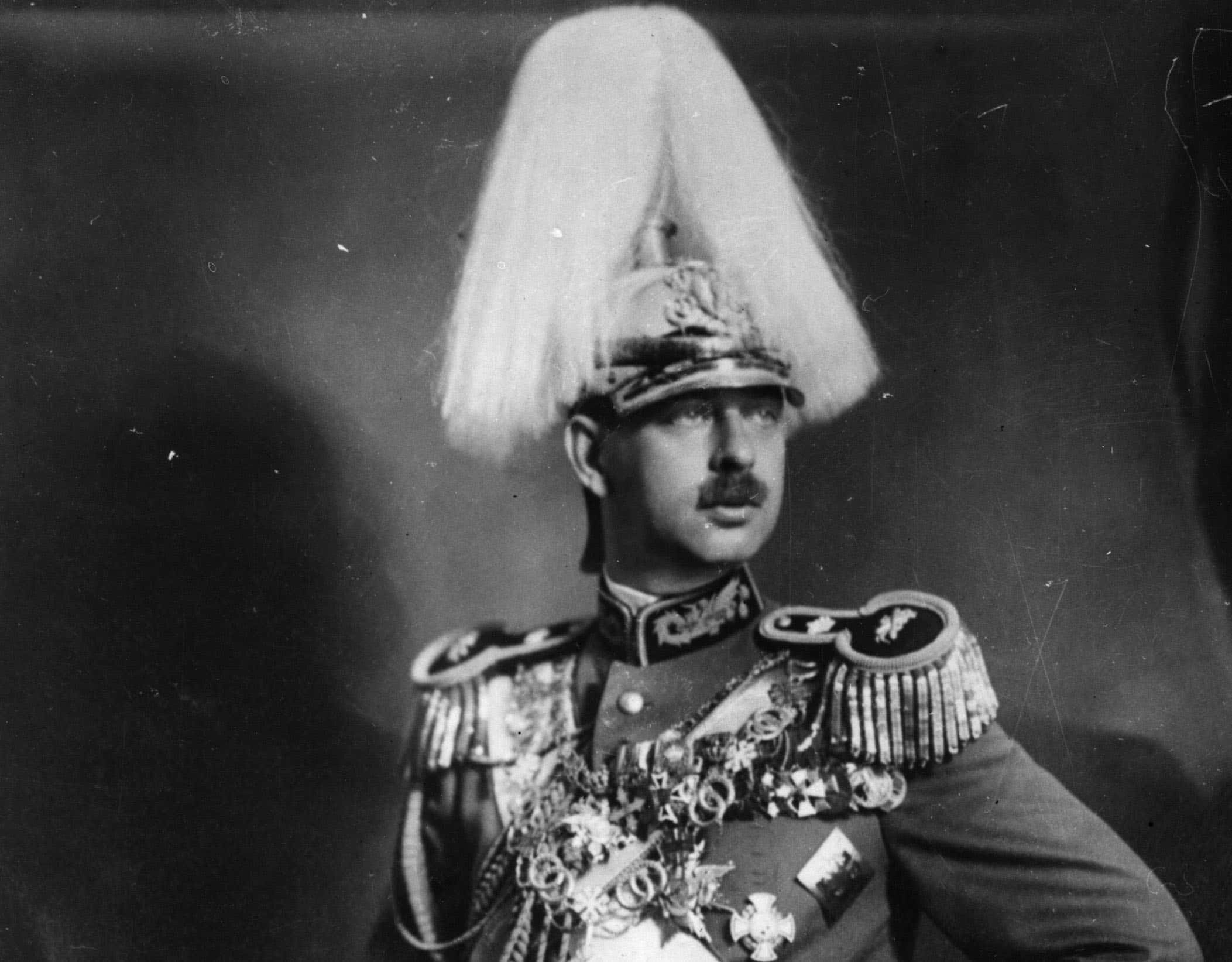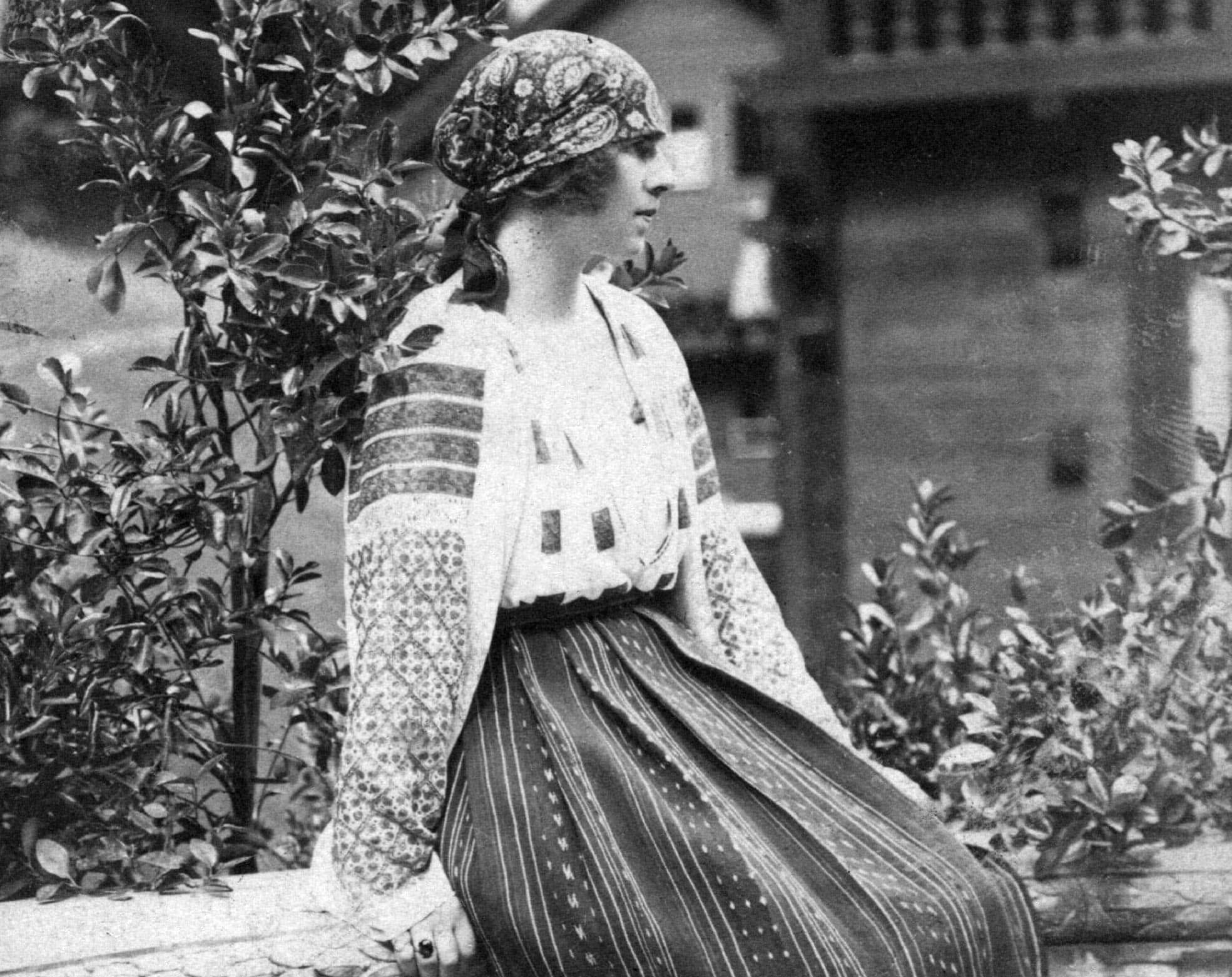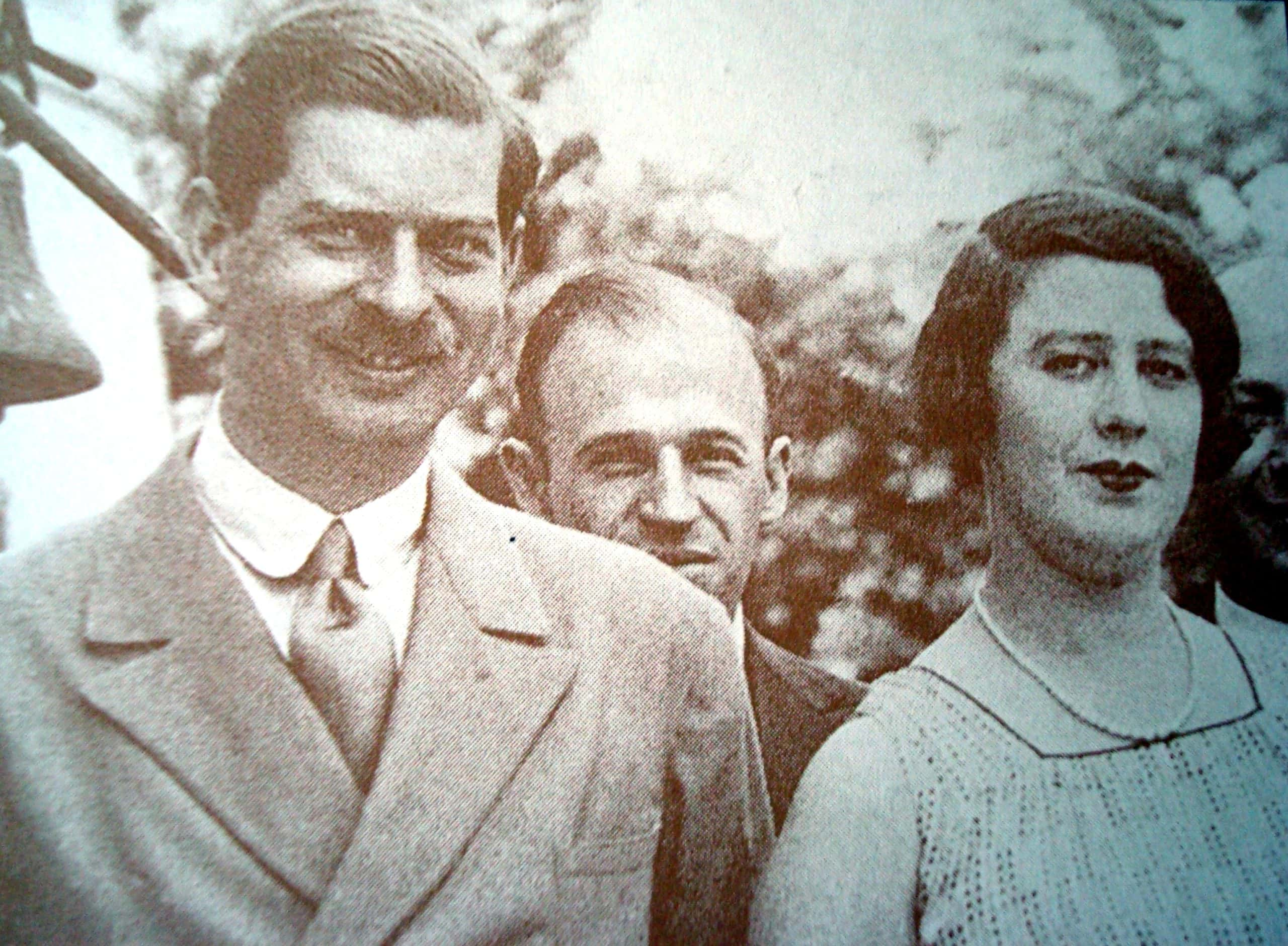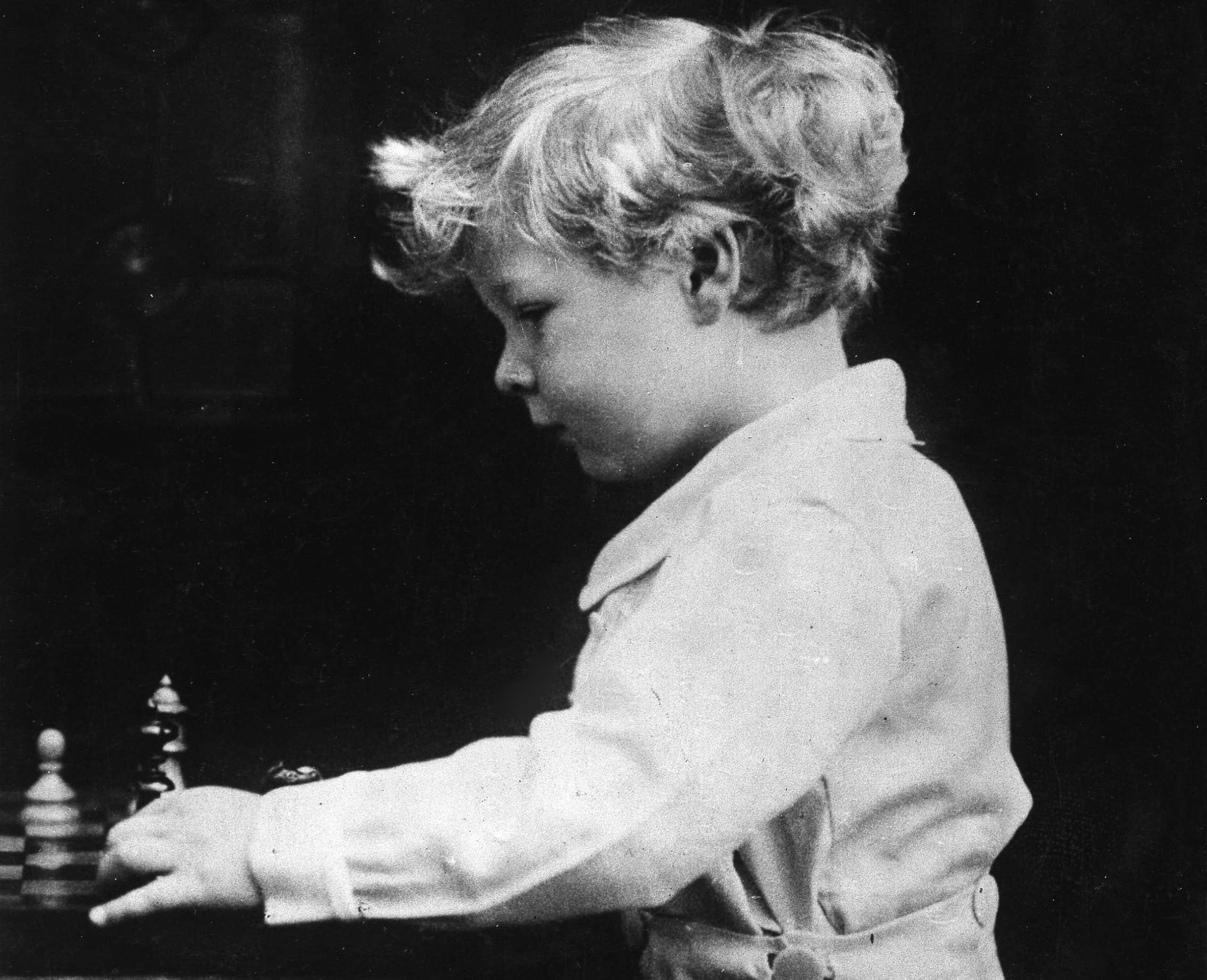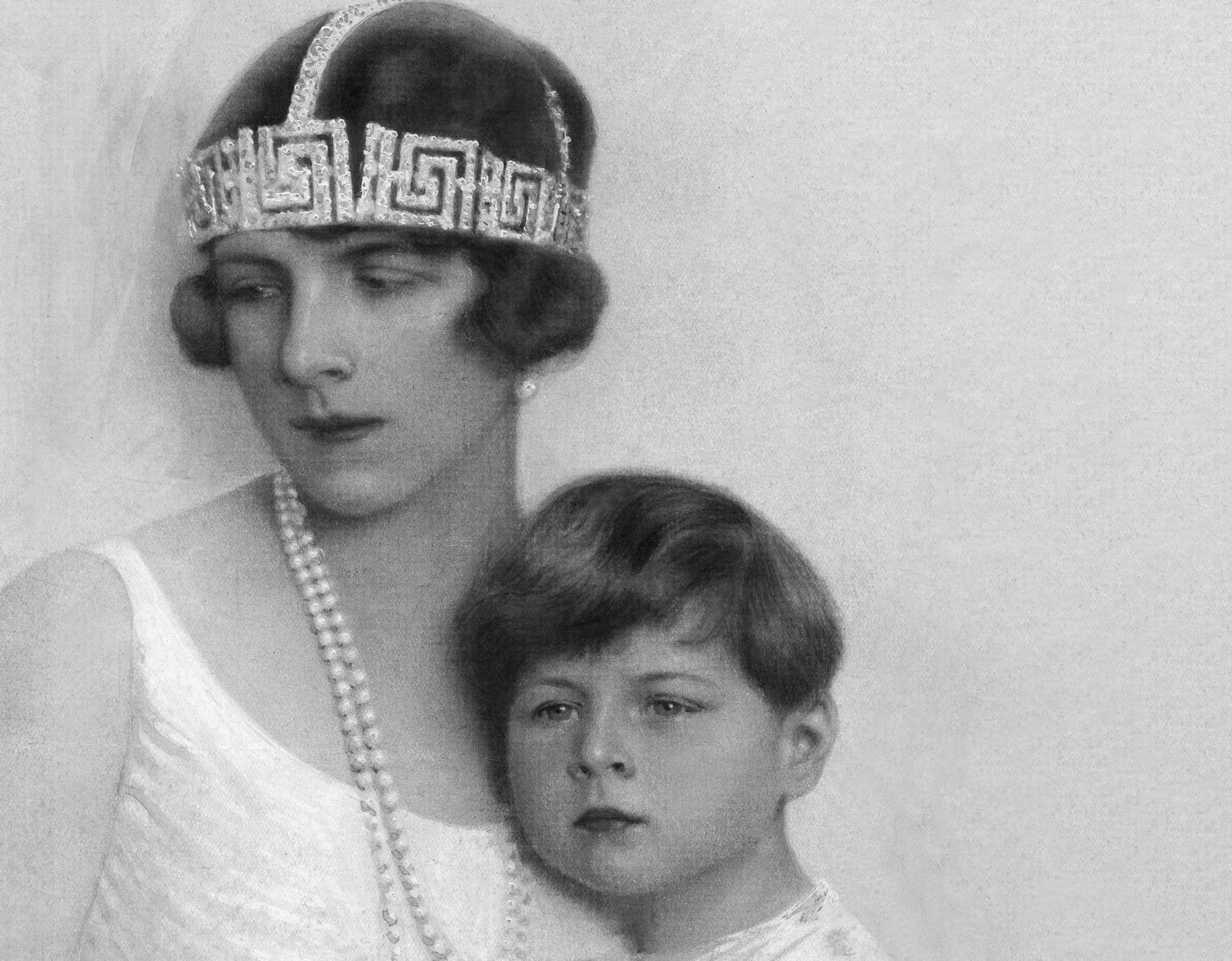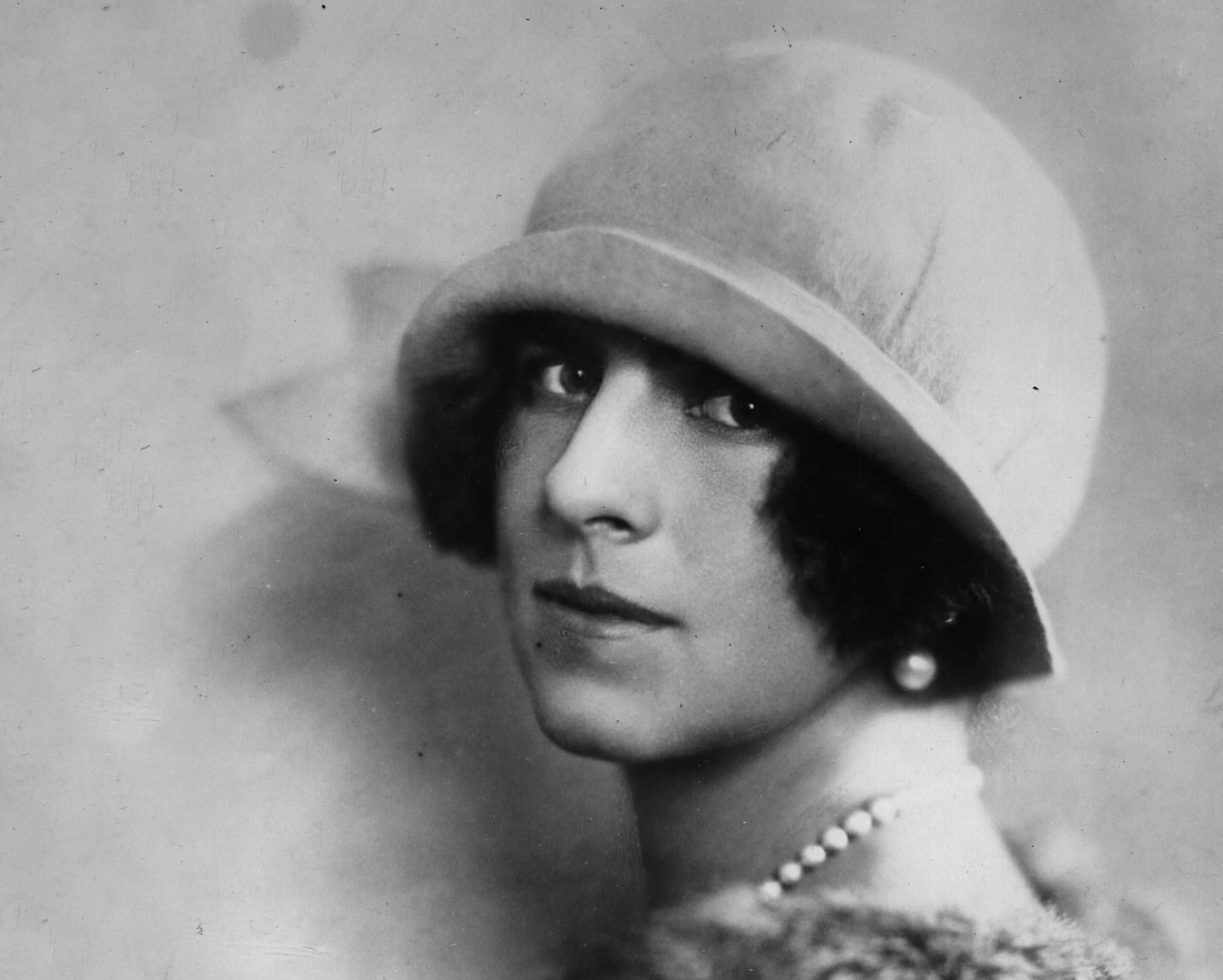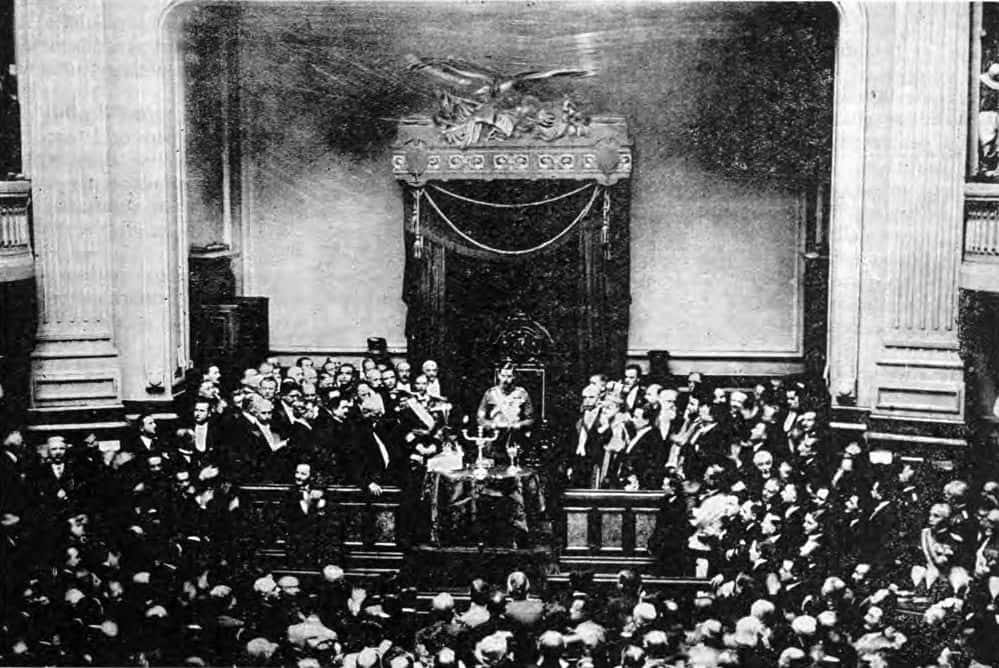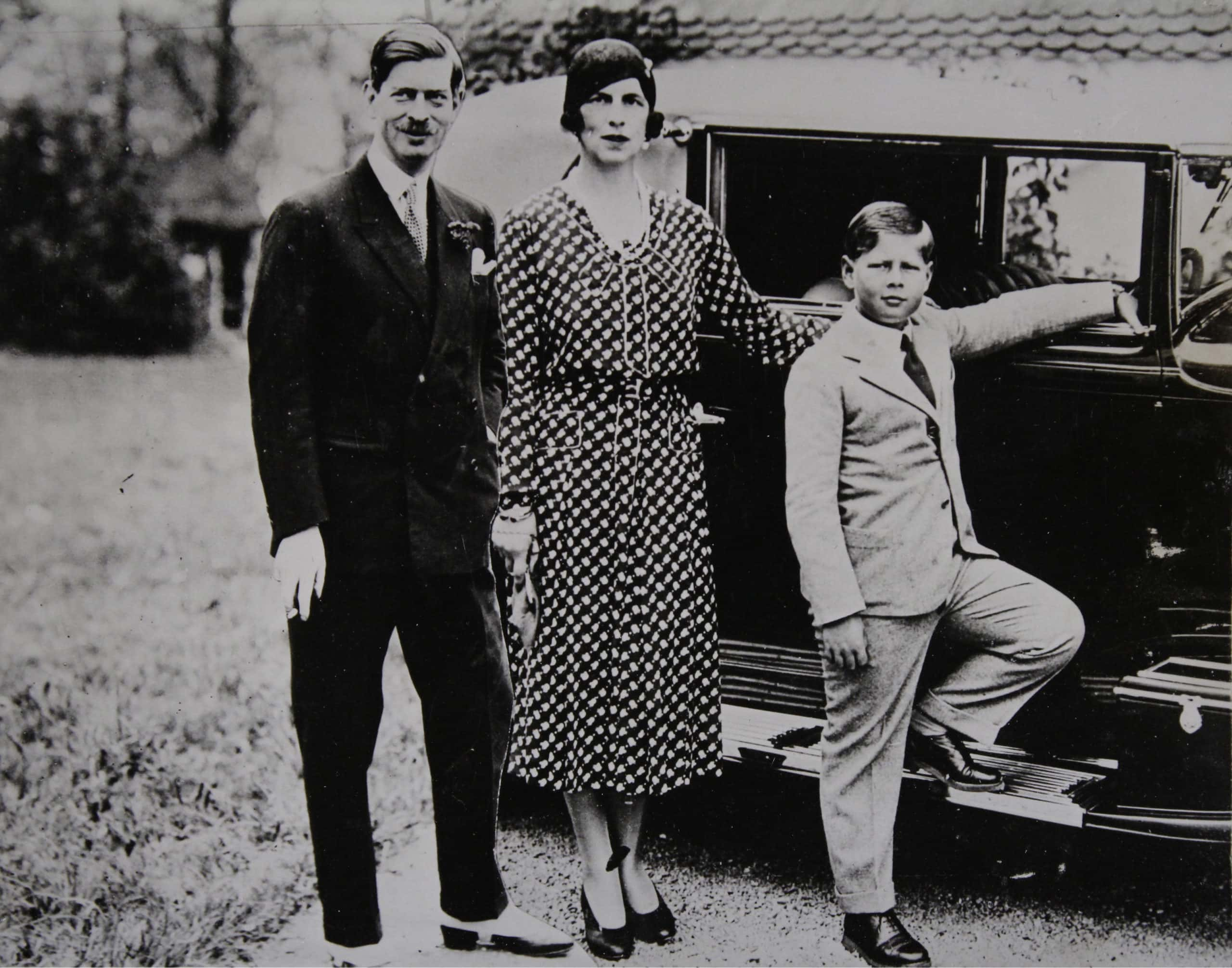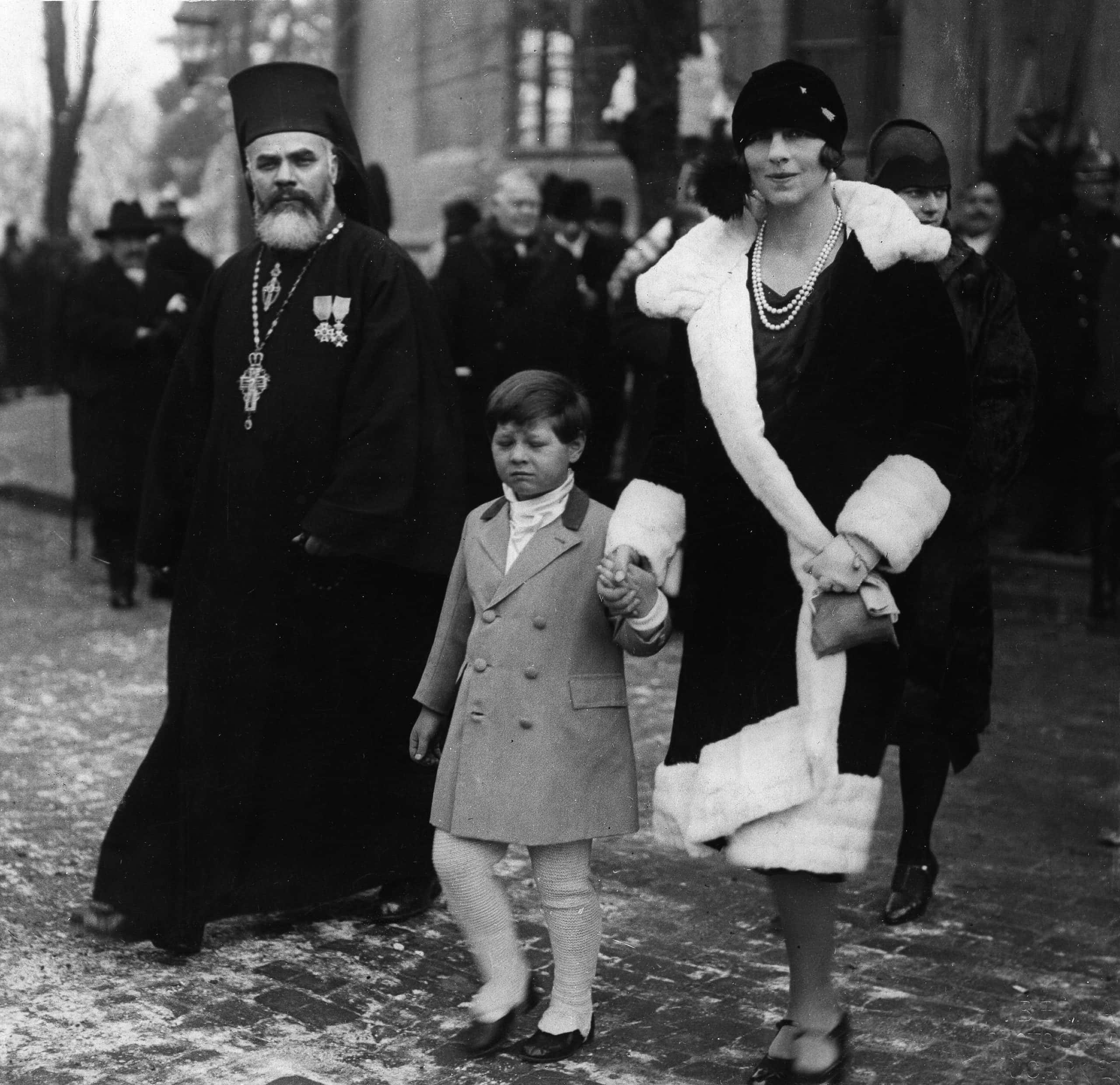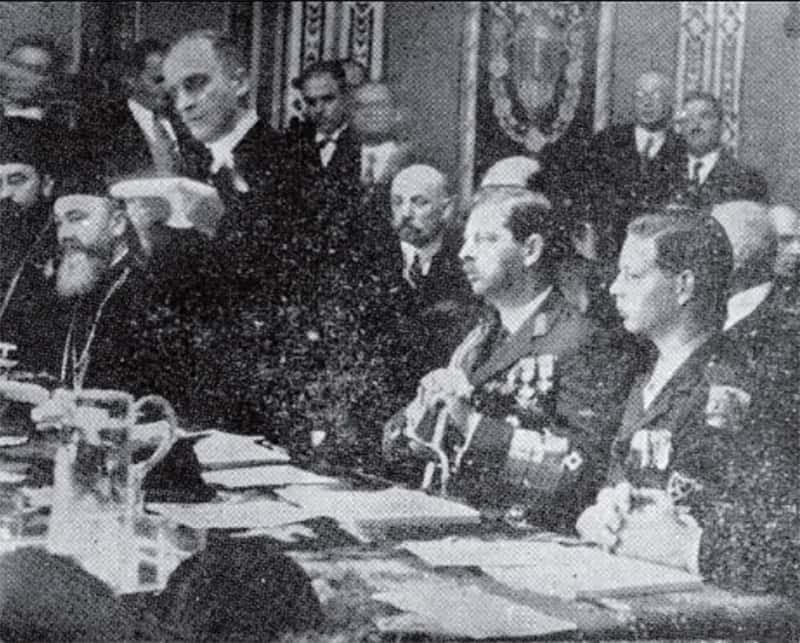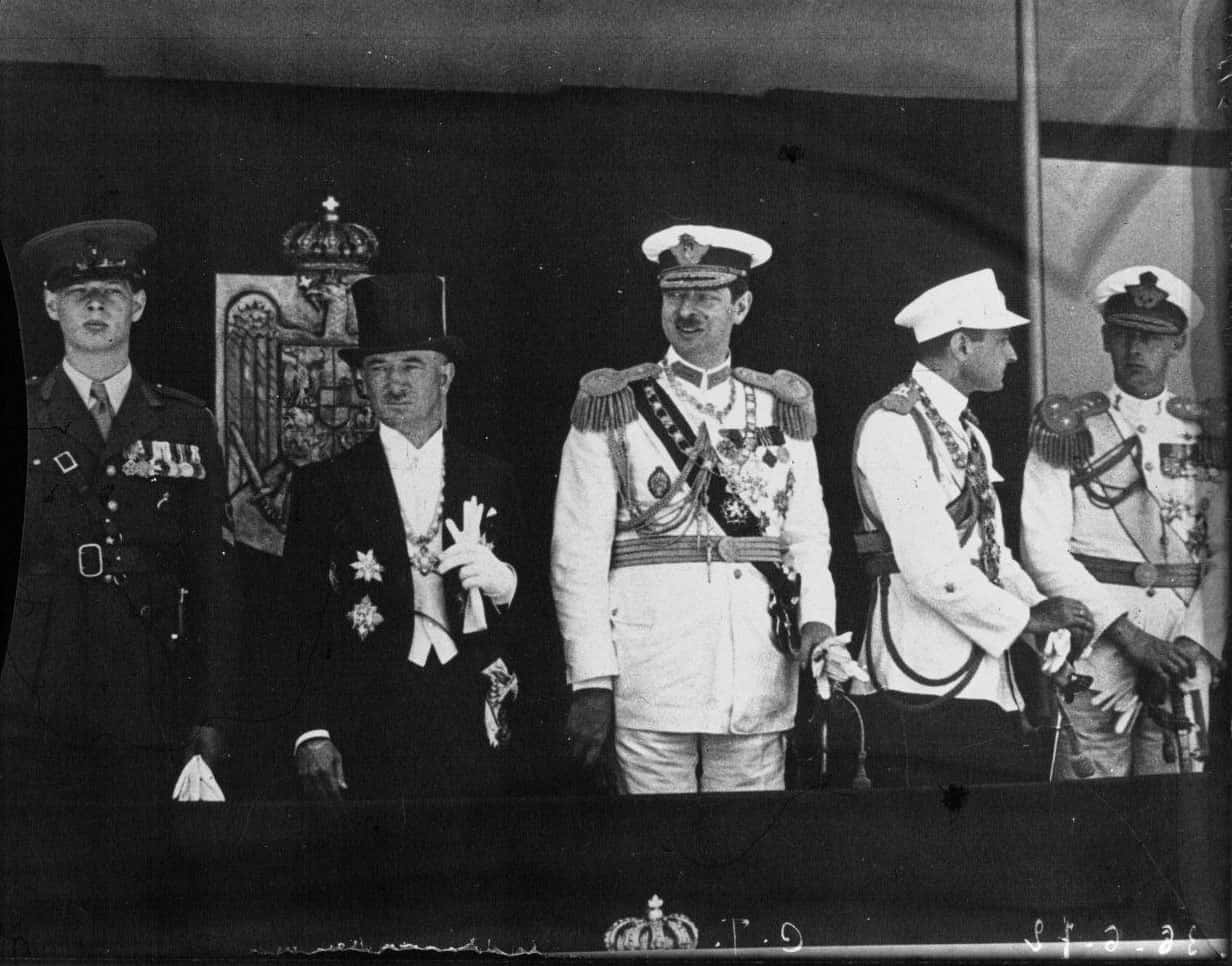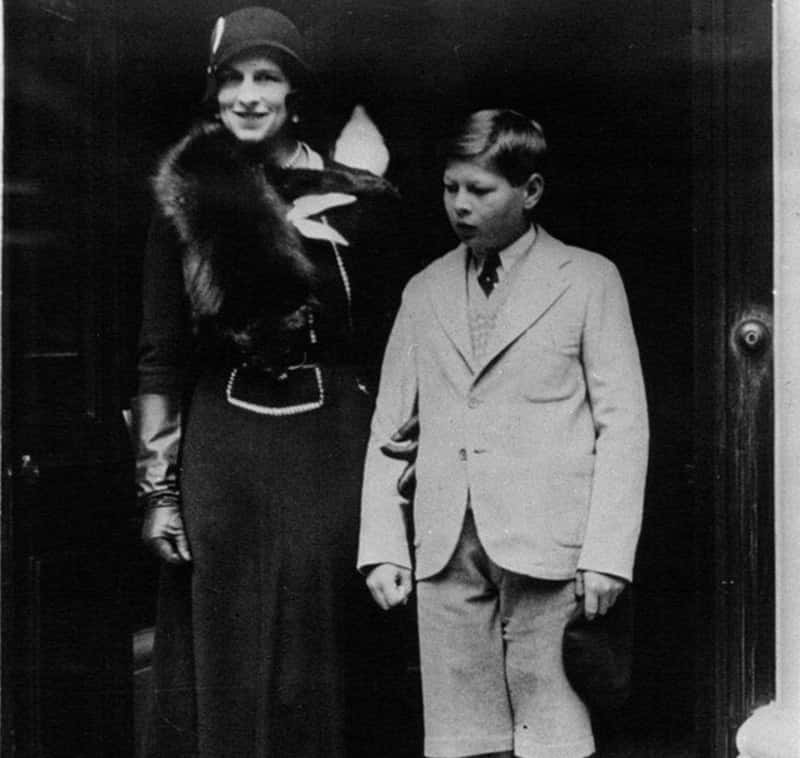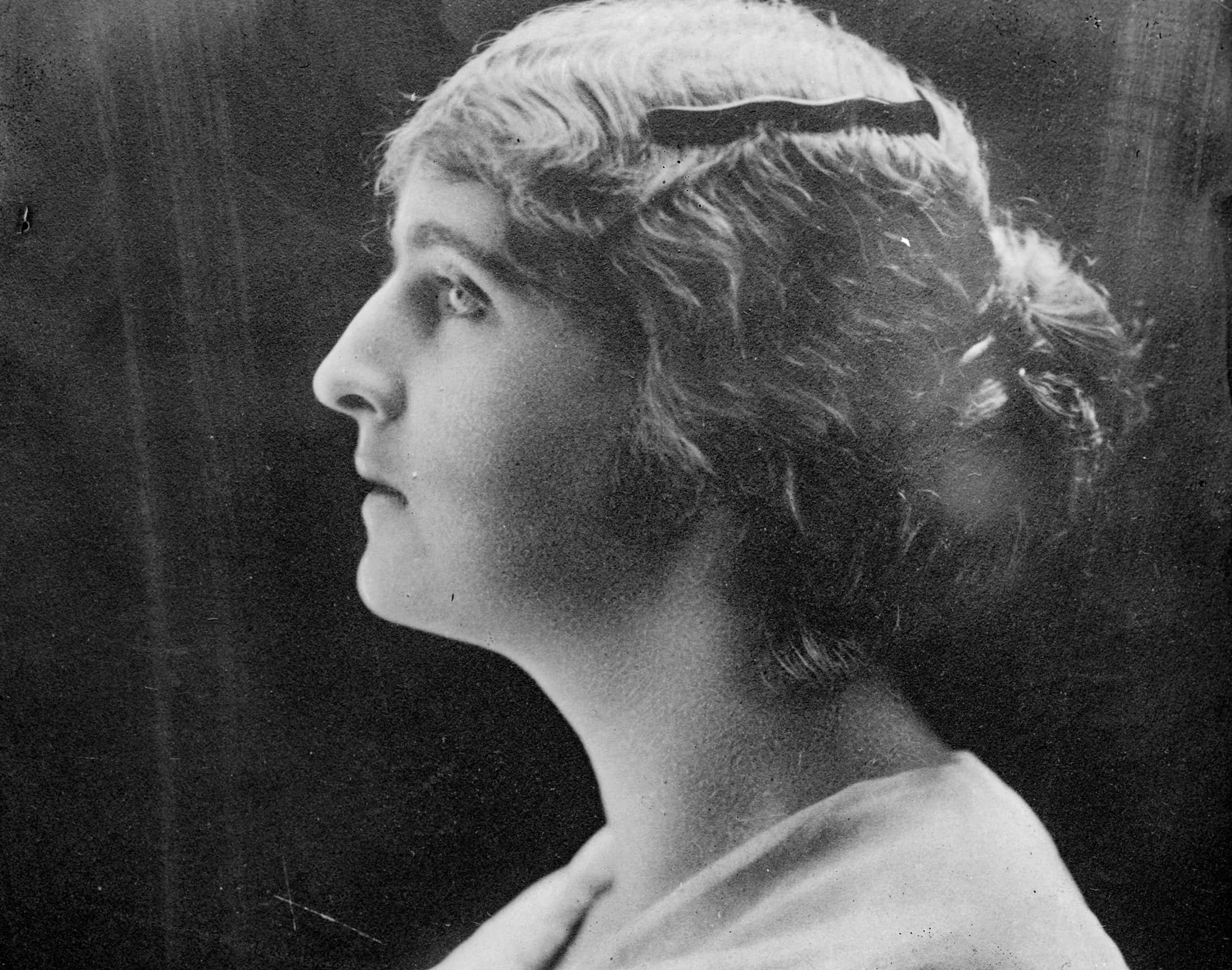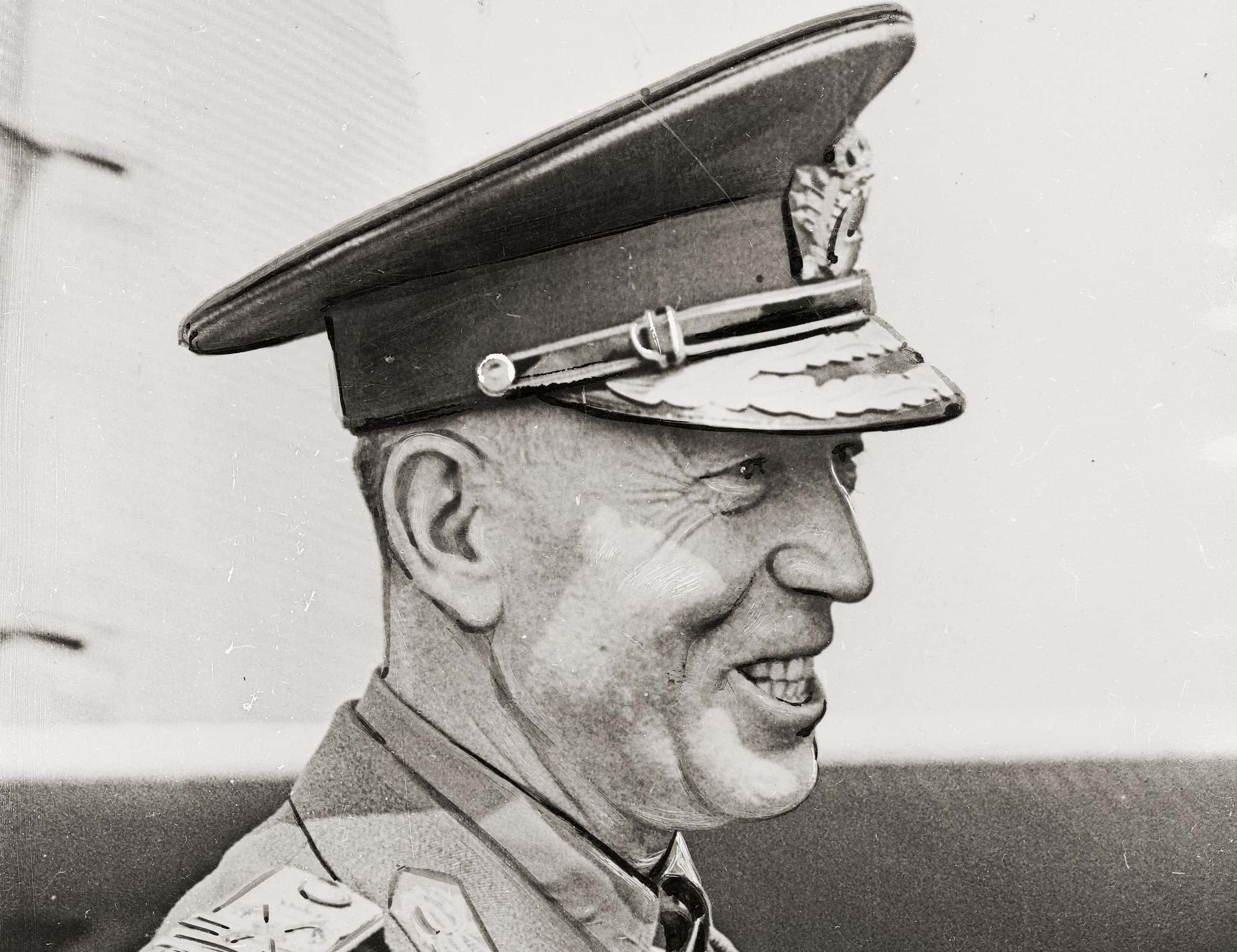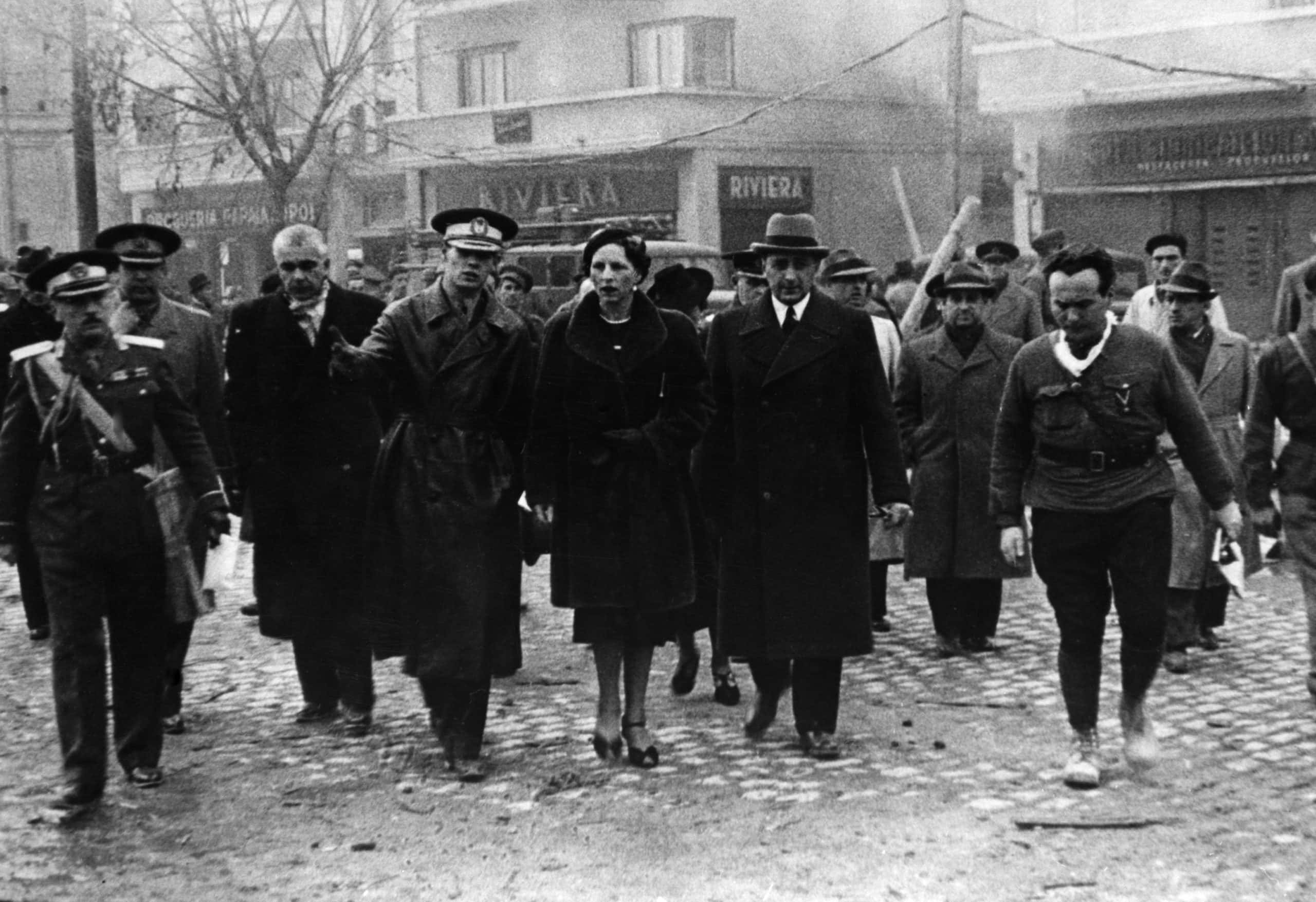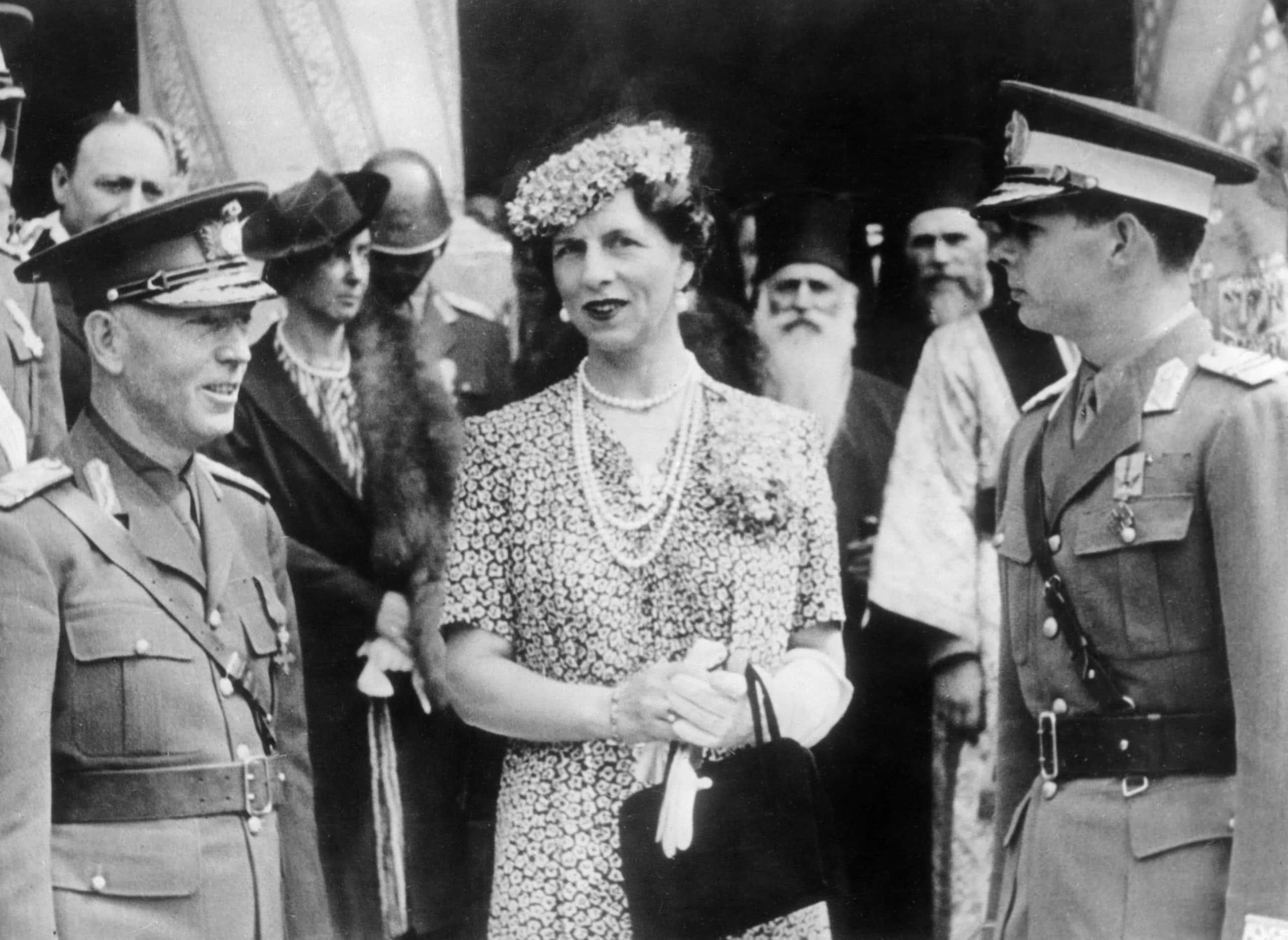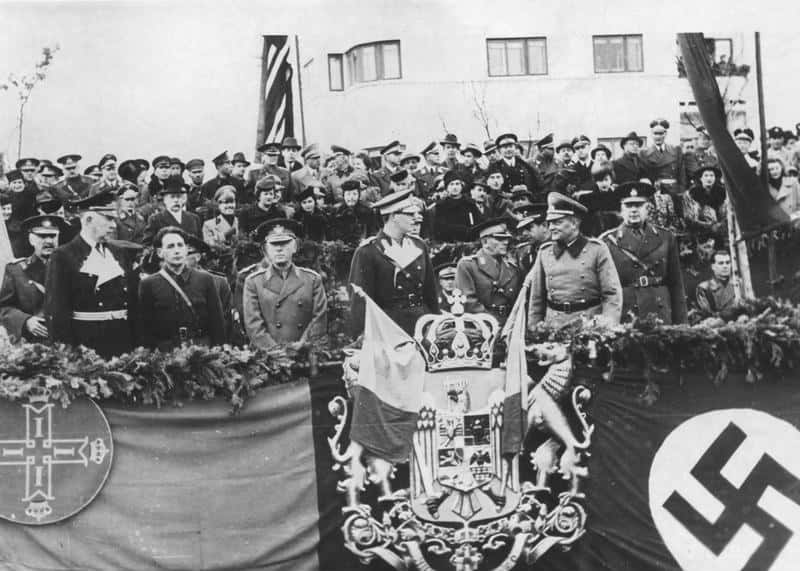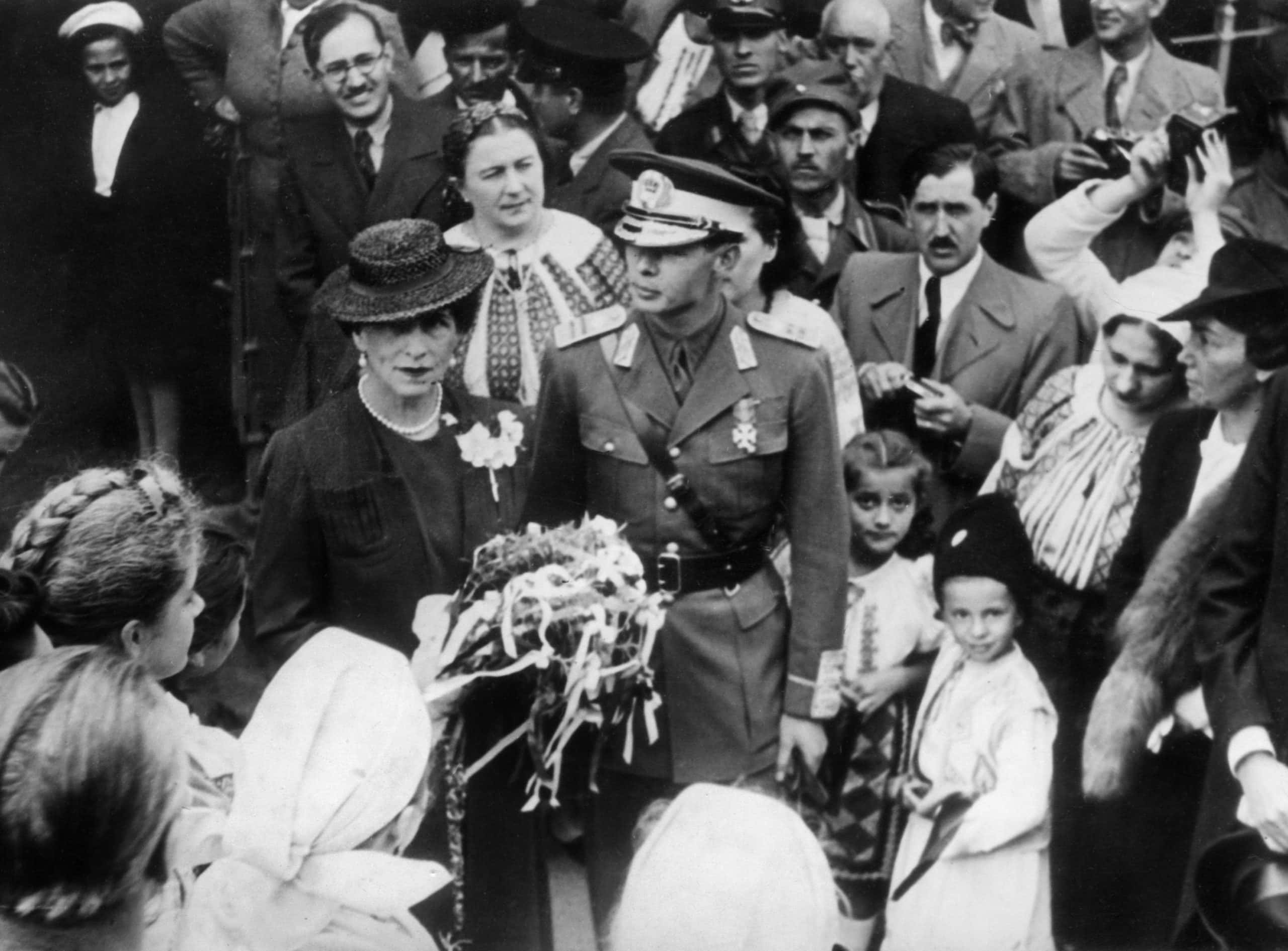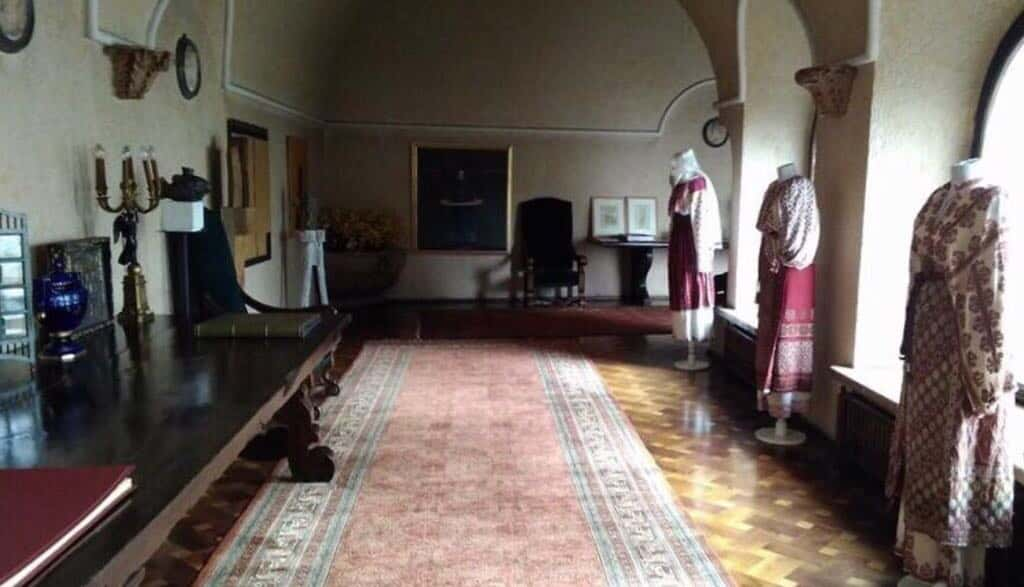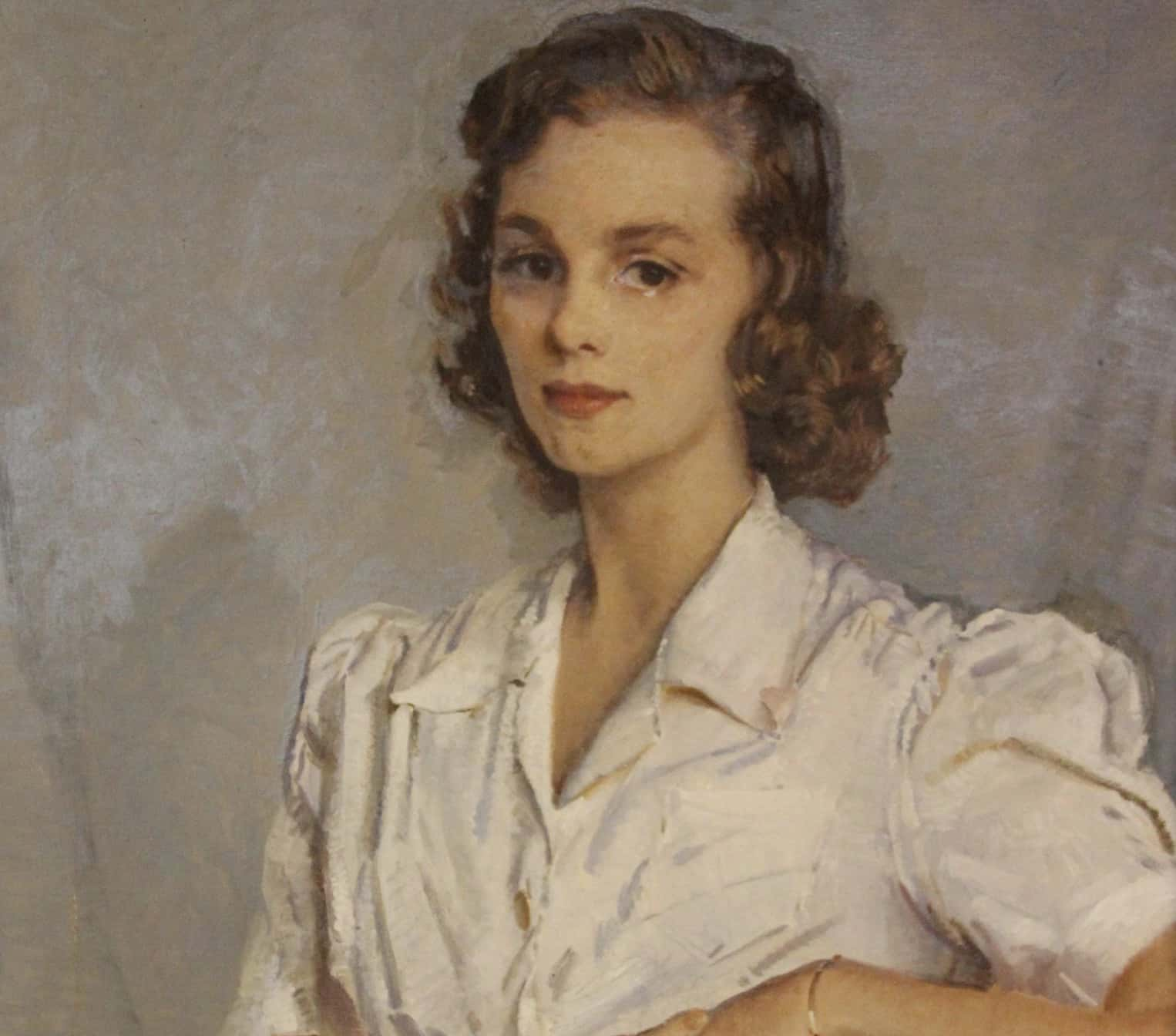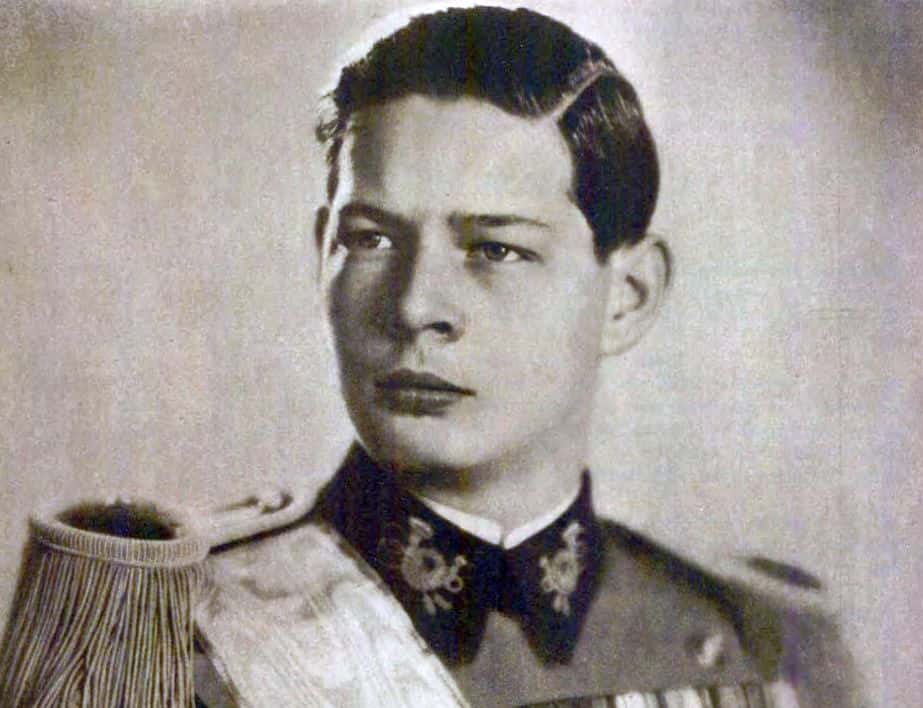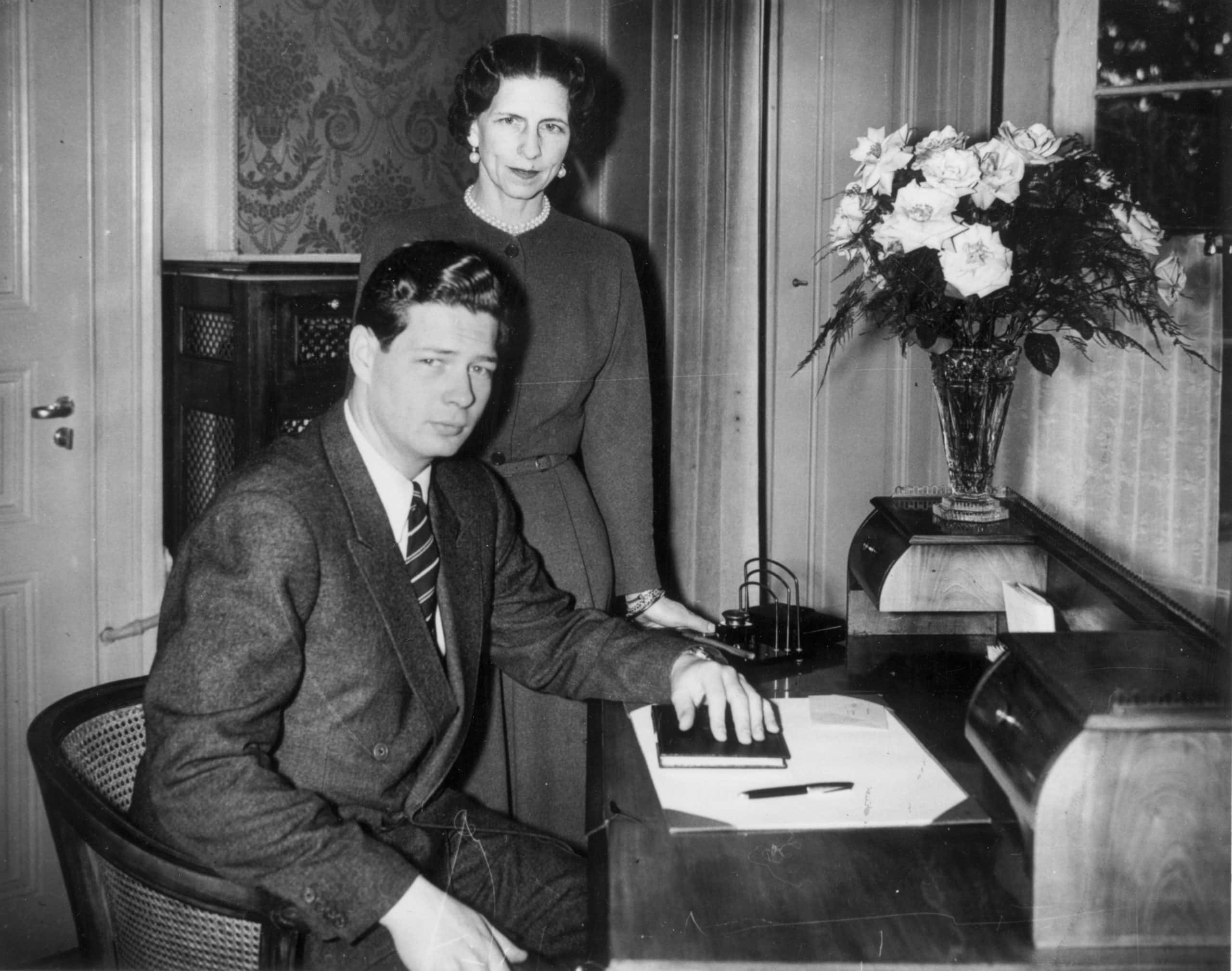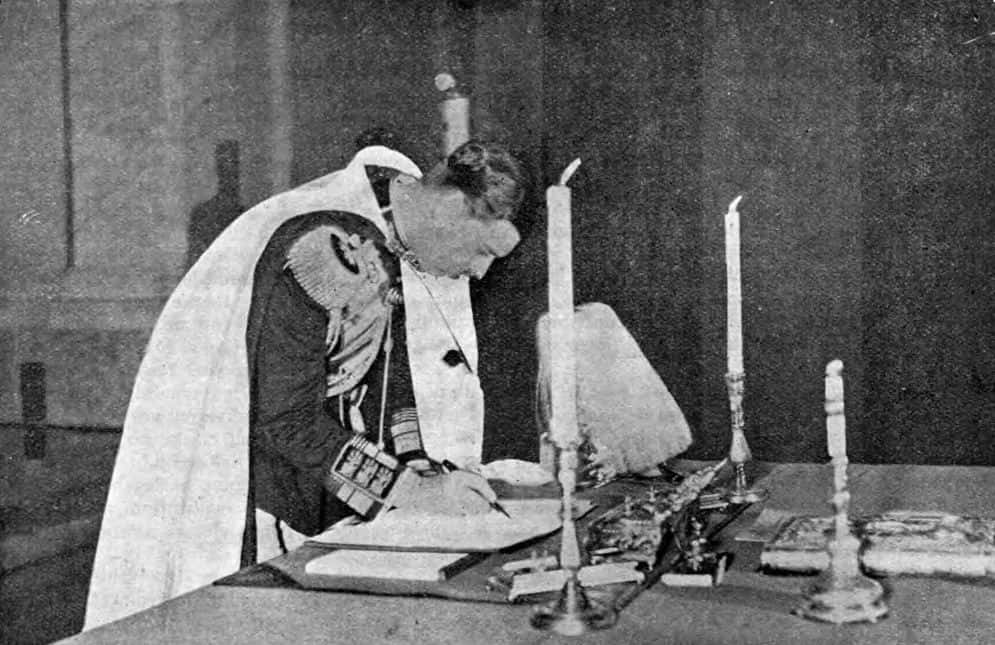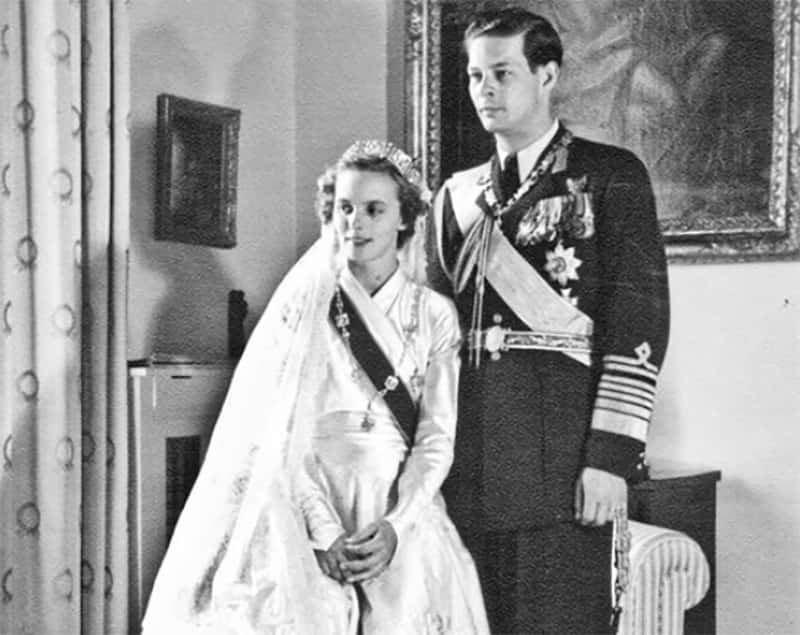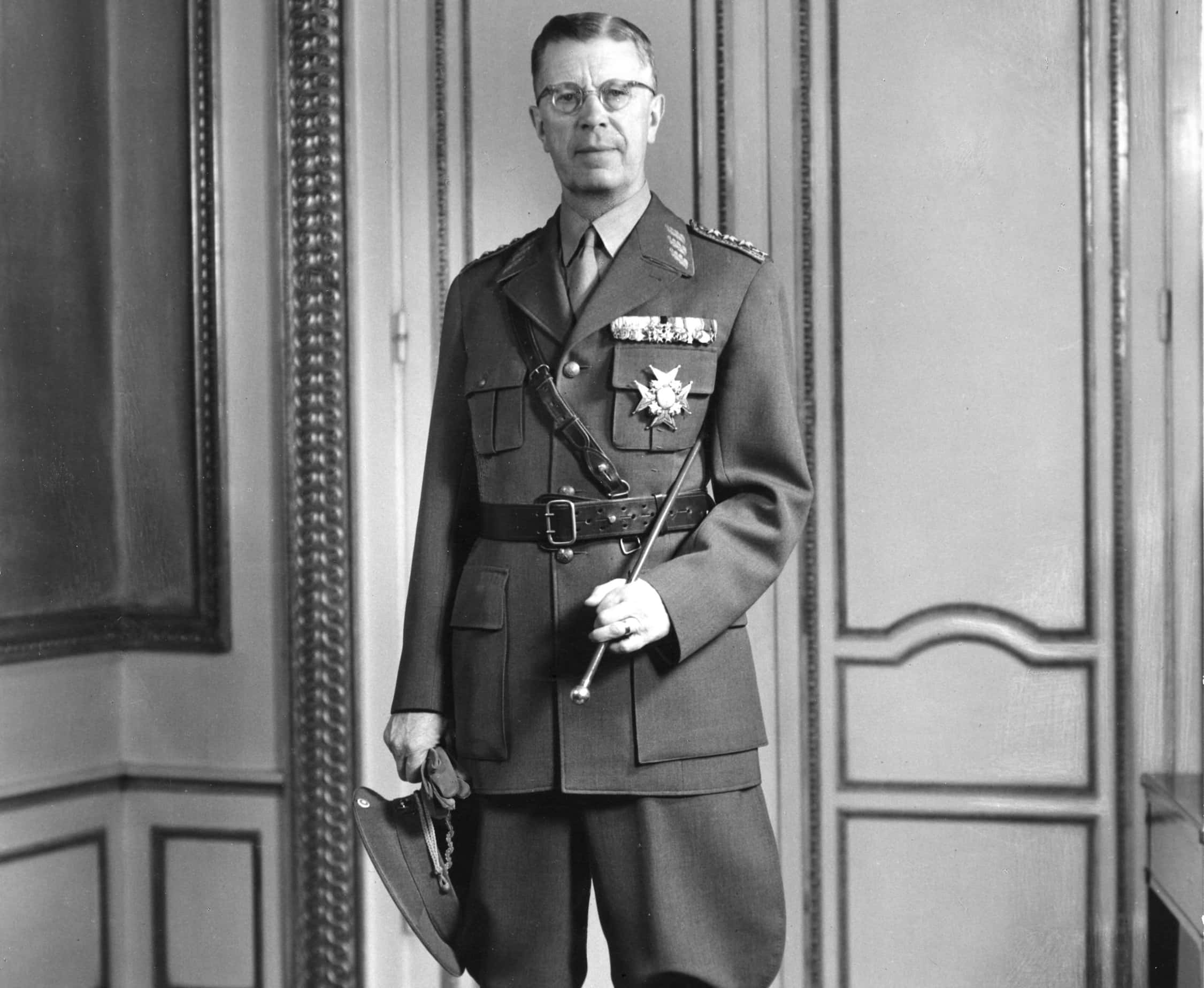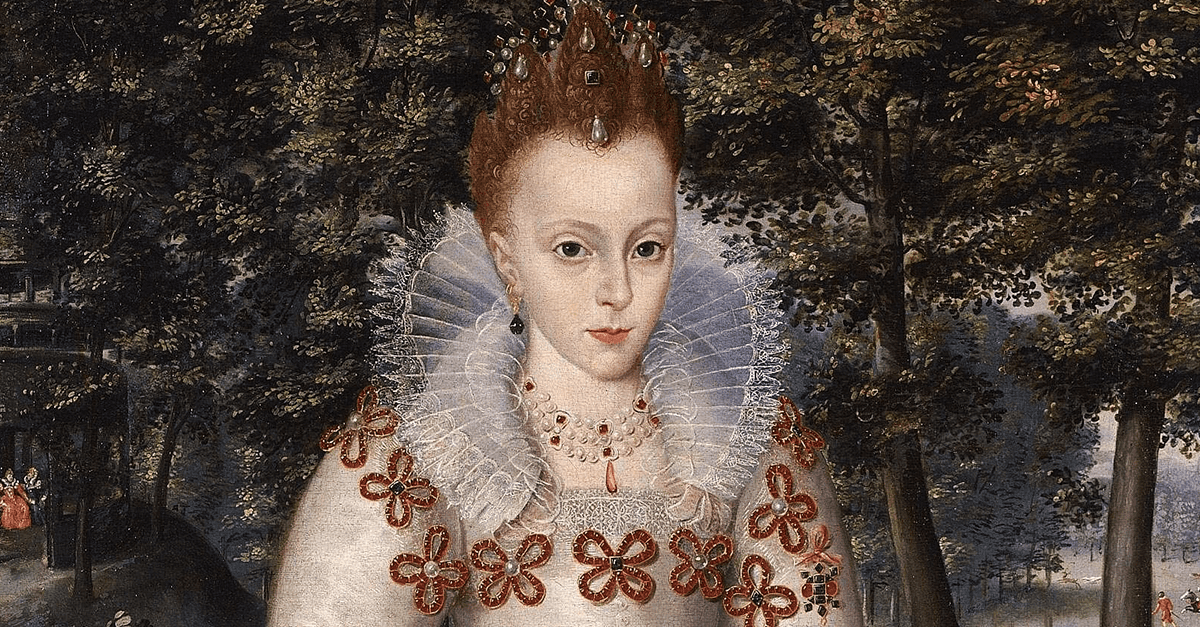If you’re looking for a real-life superhero, look no further than Princess Helen, AKA Helen of Greece and Denmark. Helen lived through some of the most horrific times in human history but she always acted selflessly, even at the risk of her own life. A survivor of WWI and WWII, and exiled several times over, Helen’s life was both extraordinary and harrowing.
1. She Started Out Strong
The third out of six royal children, Princess Helen was born on May 3, 1896, in Athens, Greece. Helen spent her childhood getting a good education and spending time with her favorite brother, Alexander. Honestly, as far as female royals go, Helen got a pretty good hand at birth. She was born late enough in history that popping out an endless parade of babies wasn’t her duty, and she wasn’t treated like property. Unfortunately, that’s probably the only bit of luck that life decided to grace her with.
2. Tragedy Struck Her Early
When Princess Helen turned 17, tragedy rocked her quiet life in Athens. Greece suffered a series of unpopular and failed wars, and many put the blame on Helen’s grandfather and ruling monarch, King George I. Tensions eventually snapped, leading to the horrific assassination of Helen’s grandfather on March 18, 1913. Just like that, her father became the new ruling monarch, and Helen became Greece’s new Crown Princess. For Helen, life as a royal was about to get harder.
3. She Almost Lost Her Father
WWI swept over Europe and Helen’s family like an unstoppable tidal wave. At the time, Helen’s father fought to maintain Greece’s position of neutrality, but being the German Emperor’s brother-in-law made it impossible. This eventually threw Greece into chaos, and, as you might imagine, the stress of it all caused Helen’s father to become dangerously ill.
What happened next changed Helen’s perspective on the world forever.
4. She Witnessed A Miracle
With Helen’s father so ill, the royal family decided to send a ship to the Greek island of Tinos to seek the icon of the Virgin and Child, which apparently healed the sick. This led to a series of unbelievable miracles that rocked Helen’s world. Not only did they actually find the icon, but after kissing it, Helen’s father actually partially recovered! Upon witnessing this miracle, Helen “developed a deep religiosity.”
It carried her through some of her darkest days, of which there would be many.
5. Her Home Came Under Attack
When her father recovered, he continued to defend Greece’s right to stay neutral, which royally angered just about everyone on all sides of the conflict. This eventually led to utter catastrophe. The French fleet bombarded Helen’s home, the Royal Palace, on December 1, 1916. As fire and brimstone rained down around her head, no one would’ve blamed Helen for hiding in fear until everything stopped.
However, Helen wasn’t the cowardly type. Instead, Helen did something that nearly ended her life then and there.
6. She Almost Lost Her Life
You see, Princess Helen loved her father. Even with the Palace literally under siege, she had only one thought running through her head: she needed to protect him. So, the young girl got up and ran through the garden of the Royal Palace through a hail of gunfire in an attempt to seek him out. The only thing that saved her was the royal guard, who spotted Helen sprinting through the garden and brought her to safety.
Things eventually calmed down, and Helen found her father and the rest of her family, safe and sound. Tragically, the reunion was short-lived.
7. Her Family Was Blackmailed
Everything came crashing down on June 10, 1917. The Allies threatened to invade the Greek port of Piraeus if Princess Helen and the royal family didn’t make themselves scarce—and quickly. With no other choice, Helen’s family went into exile, and Helen left the only home she’d ever known. And as if it wasn’t enough for Helen to have to lose her home, another tragedy made things about a thousand times worse for the young girl.
8. She Lost Her Brother
Helen’s favorite brother, Alexander, had to stay behind. You see, the Allies weren’t quite ready to establish a people’s republic in Greece, so they needed a legitimate member of the royal family to take the throne. This person needed to be a pliable puppet ruler, and they chose Helen’s brother. As Helen and the rest of the family fled, Alexander became Greece’s new king—and heartbreakingly, Helen never saw her brother, ever again.
9. Her People Loved Her
On June 11, 1917, Princess Helen and the rest of the royal family, sans Alexander, snuck out of the palace—but they did so for a surprising reason. People loyal to the royal family had taken up guard around the palace, refusing to let them leave. Unfortunately, staying wasn’t an option, so the family evaded the mob and soon arrived in Switzerland. There, Helen got another small, hopeful sign that maybe things were about to get better.
10. She Lived In Exile
As it turns out, Helen’s immediate family weren’t the only ones to leave Greece. In a touching display of solidarity, almost everyone in the entire royal family joined Helen in Switzerland, in staunch opposition to the new leadership set up in Greece. Despite the family’s rocky financial situation and her father’s ailing health, being surrounded by her family must’ve given Helen a sense of hope that kept her going.
After a few years, however, Helen met someone that turned her life completely upside-down.
11. She Met With Disaster
In 1920, Helen’s oldest brother, George, got Princess Elisabeth of Romania’s hand in marriage. Extremely happy with the match, Elisabeth’s mother invited George, along with Helen, to visit them in Bucharest, the Romanian capital. Helen accepted the invitation, arriving in early October. A couple of days into her stay, she met their Crown Prince, Carol. The meeting was a disastrous one.
12. They Were Complete Opposites
Princess Helen and Crown Prince Carol couldn’t be any more different if they tried. Helen was every inch the aristocratic princess: kind, graceful, beautiful, and intelligent. Carol liked to party—and bed girls—like a wild animal. Their differences, along with the Queen of Romania’s obvious attempts to play matchmaker, made their initial relationship a frosty one.
Like many things in Helen’s life, however, a tragedy caused their relationship to take an unexpected turn.
13. Their Love Story Began
On October 25, 1920, a telegram bearing devastating news arrived for Princess Helen. Her brother, Alexander, alone in Greece, had lost his life to sepsis. In the face of this tragedy, Helen decided to return to Switzerland. Moved by her sorrow, Carol decided to accompany Helen. On the train ride back, Helen and Carol found out several things about each other that completely changed how they saw one another.
14. They Fell For Each Other
Helen and Carol poured their hearts out to each other. Helen revealed to Carol just how deeply her brother’s passing grieved her, and how Greece no longer felt like home without her brother—her best friend—at her side. Carol told her about a commoner woman named Zizi Lambrino who captured his heart, but who he couldn’t stay with due to their differences in status. Slowly but surely, as the two grew to know each other, they began to fall in love—but not everyone was happy for Helen.
15. Her Parents Hated Her Fiancé
When they arrived in Switzerland, Carol proposed to Helen. Every fiber of Helen’s being wanted to accept Carol’s proposal, but her parents completely disapproved. Carol’s infamous playboy reputation preceded him, and her parents didn’t want him to break Helen’s heart. Helen, however, wouldn’t change her mind. Despite her family’s misgivings, they announced their engagement in November 1920, and for a while, things for Helen started to look up.
16. She Returned From Exile
On November 14, 1920, supporters of Helen’s family won the election against those in power, allowing Helen and her family to return as sovereigns. Helen returned with her new fiancé, taking back her rightful place as Crown Princess. For two months, Helen and Carol explored her homeland, discovering its ancient ruins and seeing the sights of inner Greece. And for Helen, more joy was just around the corner.
17. She Married Her Prince
In a move that must’ve felt oh-so-sweet to Helen, she and Carol married in Athens on March 10, 1921, from where she was once exiled. On top of getting married in the place she called home, Helen also was the first Greek Princess to marry in Athens, and wore a Greek key tiara to commemorate the event. After a short honeymoon, the two returned to Romania, where her life as a Romanian royal began.
18. Her Married Life Seemed Perfect
The two took up residence in chalet Foișor, located just outside of Peleș Castle in the small town of Sinaia. For a while, all seemed well between Helen and her husband. While her husband performed his official duties, Helen used her clout as a royal to become deeply involved in social work and even founded a nursing school in Romania’s capital. However, things started to fall apart, and they fell apart quickly.
19. Childbirth Almost Ended Her
You see, when Helen and Carol returned to Romania, Helen was already pregnant with their son. The pregnancy was a terrible one for Helen, and the birth itself required surgery. This greatly weakened Helen. The doctors forbade her from ever having another child, meaning this baby boy, who she named Michael, would be her only child.
And as if that wasn’t bad enough already, things with her family back in Greece were about to take a nasty turn.
20. Her Husband Was Unfaithful
Another period of unrest in Greece caused her father’s grip on the throne to become tenuous once again. Worried about her father, Helen left to visit him in January of 1922. Tragically for Helen, Carol took this brief period of separation to slip back into his old playboy ways. When Helen returned to Romania, she tolerated his infidelity, for the time being. After all, she had bigger things to worry about.
21. Her Family Lost Everything
In September 1922, a coup ripped the crown away from Helen’s father, forcing him and Helen’s mother into exile in Italy. Devastated by her family’s tragedy, Helen left Romania and stayed with her parents. Things kept getting worse, though. Helen’s father, whose health rapidly declined, passed on in January 1923. Losing her father absolutely broke Helen’s heart, and she was about to lose more than that...
22. Her Husband Grew Suspicious
Helen and Carol’s relationship were already on the rocks—but it was nothing compared to what came next. Several things ended the relationship between them for good. Helen, understandably, wasn’t really in the mood to be a loving partner in the bedroom. Carol, however, was hurt by her rejection and began suspecting her of having an affair.
Their inability to reconcile with each other became too much, and the two began to drift apart. When Carol met a new love, it became the final blow.
23. She Was Blamed For Everything
In the summer of 1924, Carol met and fell in love with a woman named Elena “Magda” Lupescu. Eventually, Carol renounced his right to the throne in order to live out his life with Lupescu, which devastated Helen. To make things even worse, her mother-in-law thought Helen was partially to blame for Carol’s decision to leave. Helen weathered her mother-in-law’s accusations and did everything she could to prove her wrong.
24. She Tried To Save Her Marriage
Despite everything, Helen must’ve believed that she and her husband could turn things around. She wrote to Carol, begging him to return. When that didn’t work, she tried to convince the Romanian politicians to not remove Carol from the line of succession. This didn’t work—if anything, it made the government move things along even more quickly.
Soon, they made her son, Michael, the new heir apparent, and gave Helen the title of Princess of Romania. That title, sadly, turned out to be an empty one.
25. She Had No Power
In July 1927, the King of Romania lost his battle with cancer, meaning Helen’s son, at just five years old, ascended to the throne. Until her son came of age, a Regency Council, headed by Helen’s brother-in-law, led the country. However, Helen was not a part of the Regency Council and held no political power in Romania. She was effectively reduced to being a figurehead, and things were about to get worse.
26. She Gave Up On Him
Helen continued to try and convince Carol to return, but her efforts were in vain. Her futile attempts, along with the dawning realization that Carol’s return put her son’s position as heir in jeopardy, caused her attitude towards him to slowly change. Helen eventually requested a divorce from Carol herself, which he eagerly agreed to.
The two officially separated on July 21, 1928. That, however, wasn’t the end of things between her and her now ex-husband.
27. Her Husband Returned
Despite Carol renouncing the throne, he still had many supporters that wanted to see him take his rightful place as Romania’s ruler. This, along with her mother-in-law’s increasing unhappiness with Helen, put a dark cloud over Helen’s life with her son. In an act of betrayal, Helen’s mother-in-law began orchestrating her son’s return as king, eventually succeeding.
In June 1930, Carol returned to Bucharest to cheers and celebration. Helen was the only one not celebrating.
28. She Did Anything For Her Son
In order to meet with his son, Carol had to go through Helen, and so, he requested an audience with the Princess. Her reaction was surprising. Helen went through with the meeting with about as much enthusiasm as someone finding a slug in their shoe, but, for her son’s sake, she extended her friendship to her ex-husband.
She definitely wasn’t about to forgive him for all that he put her through, but other powers at play certainly did all they could to convince her otherwise.
29. She Pretended To Be Happy
In the weeks following their meeting, Romanian politicians and church officials pressured Helen to resume her life with Carol and to accept the crown alongside him. Helen reluctantly agreed but demanded a separate residence from him. For a while, the two kept up appearances by showing up to events together in public and occasionally taking their meals together.
Helen could almost pretend they were a happy family, but Carol’s shenanigans quickly brought Helen back to reality.
30. She Couldn’t Be Queen
In August of 1930, the Romanian government requested Carol to sign a decree that confirmed Helen as Her Majesty, the Queen of Romania. In an incredibly petty move, Carol struck out the title, replacing it with Her Majesty Helen, refusing to give her the title of Queen of Romania. This infuriated Helen and postponed the coronation. Their strained relationship strained even further, and when Carol’s lover, Lupescu, arrived in Romania, everything went completely sideways for Helen.
31. She Was Exiled (Again)
First, Carol dealt her a heartbreaking act of betrayal. He effectively took her son away from her, only allowing her to see him in exchange for her political silence. Eventually though, he just decided to exile her outright, forcing her to consent to a separation agreement in October 1931. He kept Helen isolated, away from anyone able to lend her a hand. This was a humiliating blow for Helen, but she wasn’t about to go down without a fight.
32. She Fought Back
After a period of negotiations, Helen wrangled a significant amount of money from Carol, got the right to spend four months per year in Romania, and the right to see her son abroad two months per year. It was likely more than what Carol planned to give to Helen, and for Helen, it gave her a small win over her ex-husband.
In November 1931, Helen left for Germany, but the distance between them didn’t make things easier for Helen in the slightest.
33. She Took Revenge
In September 1932, Helen took an opportunity to get a little payback. Carol made two very odd demands of Helen in return for allowing her to receive her son for visits: Michael could not wear shorts in public, and Helen could not be in photographs with her son. Helen made a very public statement by allowing both to happen at the same time during one of Michael’s visits, royally angering Carol. This was exactly what Helen wanted, and she used his anger to begin a violent press campaign against him.
34. She Angered Her Allies
Helen granted an interview with The Daily Mail, hoping to sway public opinion in her favor. To further enrage Carol, Helen returned to Bucharest with Michael and threatened him with legal action. She even tried to get both the Romanian government and Princess Elisabeth involved. Neither party helped much, and in fact, Elisabeth was so scandalized by the interview in The Daily Mail that the two got into a fistfight over it!
This was the last straw for Carol—he banished her from Romania, permanently. This seemed like a loss on the surface, but being banished ended up working out surprisingly well for Helen.
35. She Was Bribed
Now permanently living in Italy, Helen found a sense of stability and still got to see her son for two months out of the year. Unfortunately, the arrival of WWII quickly dashed her dreams of a tranquil life. Germany forced Carol to abdicate the throne, and Helen’s 18-year-old son became King under the watchful eye of the dictator Ion Antonescu.
Antonescu, in an attempt to cozy up to Michael, gave Helen the title Queen Mother of Romania on September 8, 1940, and persuaded her to return to Bucharest. With some trepidation, Helen made the return to Romania but quickly found out that not all was well.
36. She Put Her Life In Danger
Helen arrived in Romania on September 14, 1940, but soon learned that Antonescu had no plans to let her do as she pleased. He controlled her and her son with an iron grip, reducing them to carrying out nothing more than ceremonial duties. Helen would not let this stand though and began to guide her son through this dangerous game of politics.
Helen outwardly supported the regime while undermining their efforts—and this put her in grave danger.
37. She Saved Others At A Cost
During this period of time, Helen pulled off a series of risky political maneuvers—but one was so dangerous, it’s unforgettable. Yup, that’s right, our girl Helen helped protect Jewish citizens during WWII. She personally spoke to Antonescu to halt their deportation, using her political connections to support her appeal.
Eventually, she managed to force Antonescu to emancipate portions of the Jewish population. Although this was a great victory for Helen, it painted a giant target on her back.
38. She Was Accused Of Treason
The relationship between Helen and Antonescu continued to get worse. Helen openly disapproved of Antonescu’s use of the Romanian army, further breaking things down between the two. When Michael organized a resistance against Antonescu, it was the last straw, and it triggered Antonescu’s wrath. He accused Helen of whispering plans for treason into her son’s ear and pulled out the ultimate threat.
39. She Overthrew A Dictator
Antonescu let Helen know, in no uncertain terms, that he would abolish the monarchy if any more treasonous plots cropped up. Despite the threat, Helen and Michael did not back down, and on August 23, 1944, Michael overthrew Antonescu in a royal coup. Things after the coup moved very quickly for Helen. For their safety, Helen and Michael moved in with Princess Elisabeth, despite their tense relationship. Although they won back the crown, the action was just getting started.
40. She Protected Her Son
Helen spent the next several years watching out for attempts on her son’s life. Romania was in political turmoil, and between trying to establish a new government, acts of sabotage all over the country, and the powerful Soviet Union breathing down their necks, Helen had her hands full and then some. Eventually, her son decided that the country needed to establish a democratically elected government.
This greatly displeased the Soviet Union. Despite the danger, Helen supported her son every step of the way.
41. She Went On Strike
In response to the Soviet Union’s disapproval, Helen and Michael essentially went on strike, locking themselves in Elisabeta Palace for six weeks. Their decision left them in an incredibly tough position. In an act that shocked Helen, Western democratic countries refused to support them, and even Princess Elisabeth voiced her support for the communist officials in Romania.
Their positions as sovereign became even more precarious, and the communist officials did not let them forget it.
42. They Tried To Break Her
Throughout the year 1946, the new government gained more and more power, while Helen remained stuck in the palace, which was slowly falling apart. Helen and Michael had no access to running water three hours every day, and didn’t even have electricity most of the time—unsurprisingly, the new government was in no hurry to help.
Eventually, WWII wound down to an end, but peacetime did not turn Helen’s fortunes around. If anything, things somehow got worse.
43. She Lost It All
After the signing of the Paris Peace Treaties on February 10, 1947, Helen and Michael became completely deprived of any royal duties at all. Eventually, an invitation to the marriage of Queen Elizabeth II of England and Prince Philip gave Helen an excuse to travel abroad and escape Romania, even if just for a little while.
She took the time to visit family and even had the opportunity to watch her son fall in love with Princess Anne of Bourbon-Parma. Eventually, and despite multiple warnings not to do so, Helen and Michael returned home—and they found themselves far from welcomed.
44. She Tried To Hang On To Power
The new government in Romania had secretly hoped for Helen and Michael to stay abroad, allowing them to abolish the monarchy without fuss. Their return, however, forced the new government to confront the two directly, and they demanded that Michael abdicate. Michael refused, stating that the people should be able to vote upon a decision like this.
Helen and Michael, however, underestimated how desperate the new government was, and did not expect their ominous and chilling threat.
45. They Threatened Her
The new Romanian government presented them with an absolutely disturbing choice. If Michael did not abdicate, they would execute 1,000 student prisoners who disagreed with the new government, without mercy. This piece of blackmail worked. Michael abdicated, forcing Helen and Michael into exile. But because life had more for Helen, it continued to throw her one curveball after the other.
46. She Barely Scraped By
Helen settled with her son in Switzerland, where she had her hands full making sure they had enough money to make ends meet. The Communist Party kicked them out of Romania with no time to take anything with them, so Helen had to scramble for money. She sold off foreign assets when she could, which helped them get by…barely To make things worse, a specter of her past came back to haunt her: her ex-husband.
47. Her Ex-Husband Returned
Carol, apparently hiding in the shadows this entire time, came out of the woodwork to harass Helen, accusing him of keeping Michael away from him. This time, however, Helen didn’t have to face Carol alone. In a shocking twist, Michael finally made one thing clear to Carol: he didn’t want to play nice with the man who openly, and repeatedly, humiliated his mom.
Michael had decided that he didn’t want to see Carol ever again. It was, finally, a victory for Helen, and more small victories were to come.
48. She Smashed Social Norms
The marriage between Helen’s son and Princess Anne of Bourbon-Parma was rife with issues, the biggest being their religion. Helen’s son was an Orthodox Catholic, while Anne was Roman Catholic. However, Helen wasn’t about to let religion stand in the way of her son’s happiness, and managed to arrange a wedding between the two in Athens, despite protests from Anne’s family and the Romanian government. Even considering everything else Helen managed to pull off, this was probably one of her proudest moments.
49. She Fell In Love Once More
Towards the end of her life, Helen watched her family grow, now without royal titles or duties. Despite her financial difficulties, she managed to travel frequently to visit family and even began a romantic relationship with King Gustaf VI Adolf of Sweden. Although the two shared a love of arts, plants, and each other, Helen refused to marry him when Gustaf asked.
Whatever her reasons were, Helen still lived a fulfilling life, right up to when the end loomed near.
50. She Was A Hero
In 1979, Helen became too old to live alone and moved to Lausanne, Switzerland to be near Michael and Anne. One year later, on November 28, 1982, Helen passed at the age of 86. Having lived in relative obscurity, her burial was a quiet one. Eleven years later, for her efforts to save the Jewish population in WWII, the State of Israel awarded Helen of Greece and Denmark, the Queen Mother of Romania, the title of “Righteous Among the Nations.”

